Transforming your porch into a productive greenhouse space opens endless possibilities for year-round gardening, whether you have a sprawling covered porch or a compact balcony area. Porch greenhouses offer the perfect solution for gardeners who want to extend their growing season while maximizing limited outdoor space. These versatile structures can protect your plants from harsh weather conditions, provide optimal growing environments, and create beautiful focal points that enhance your home's exterior appeal. From simple lean-to designs that attach directly to your existing porch structure to portable mini greenhouses that can be moved seasonally, there are numerous creative approaches to establishing your own porch-based growing space. The beauty of porch greenhouse gardening lies in its accessibility and adaptability to various architectural styles, budgets, and gardening goals, making it an ideal choice for both novice and experienced gardeners seeking to cultivate plants in protected environments.
1. Lean-To Porch Greenhouse Design
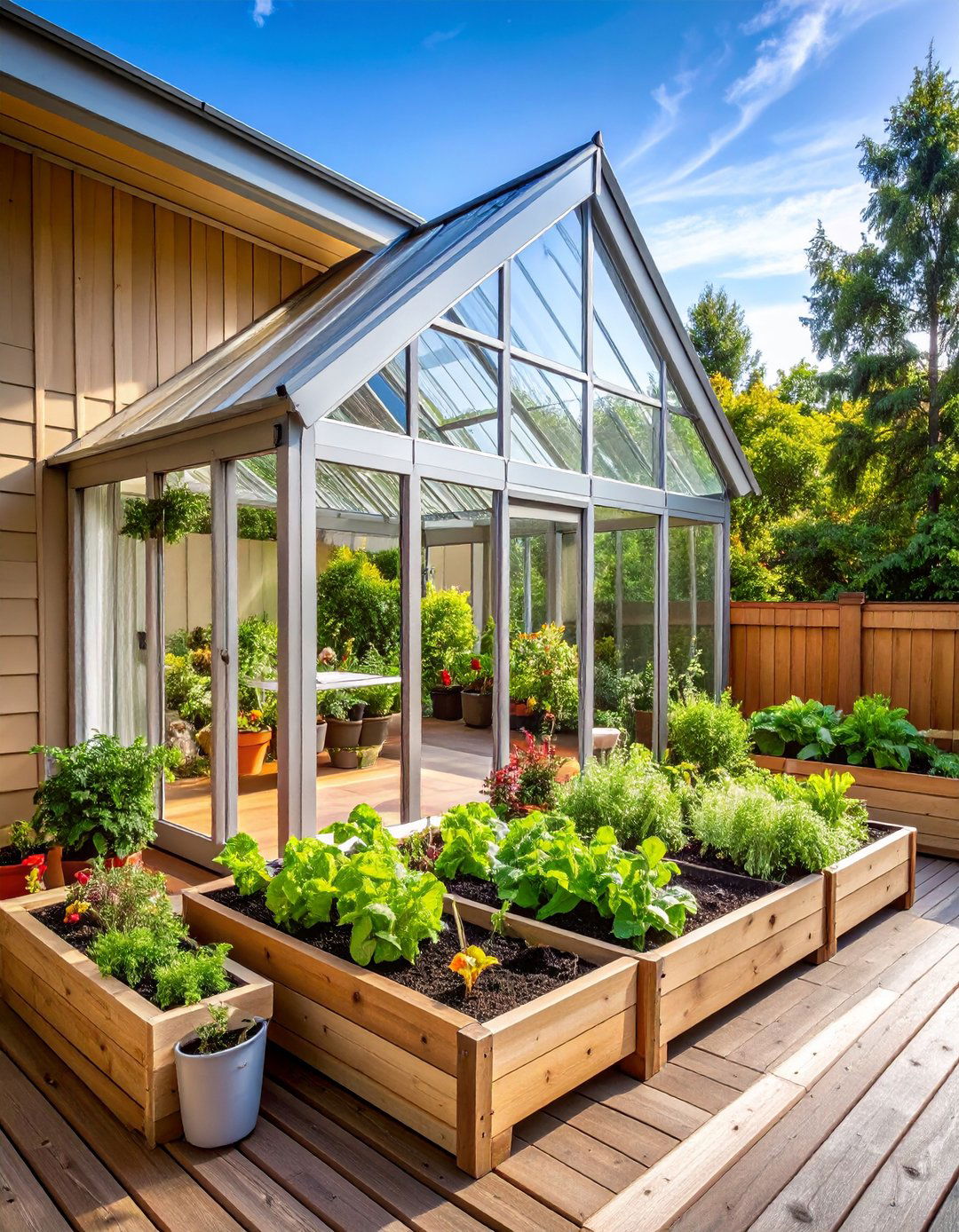
How can you maximize your existing porch structure for greenhouse gardening? A lean-to porch greenhouse attaches directly to your covered porch, utilizing the existing roof and wall support to create an efficient growing space. This design typically features a slanted roof that slopes away from the house, allowing optimal sun exposure while protecting plants from harsh weather. The structure uses polycarbonate panels or greenhouse plastic stretched over a lightweight aluminum or wood frame. This configuration provides excellent accessibility from your porch area, making daily plant care convenient and comfortable. The lean-to design also benefits from shared heating with your home, reducing temperature fluctuations during cold periods.
2. Enclosed Porch Conversion
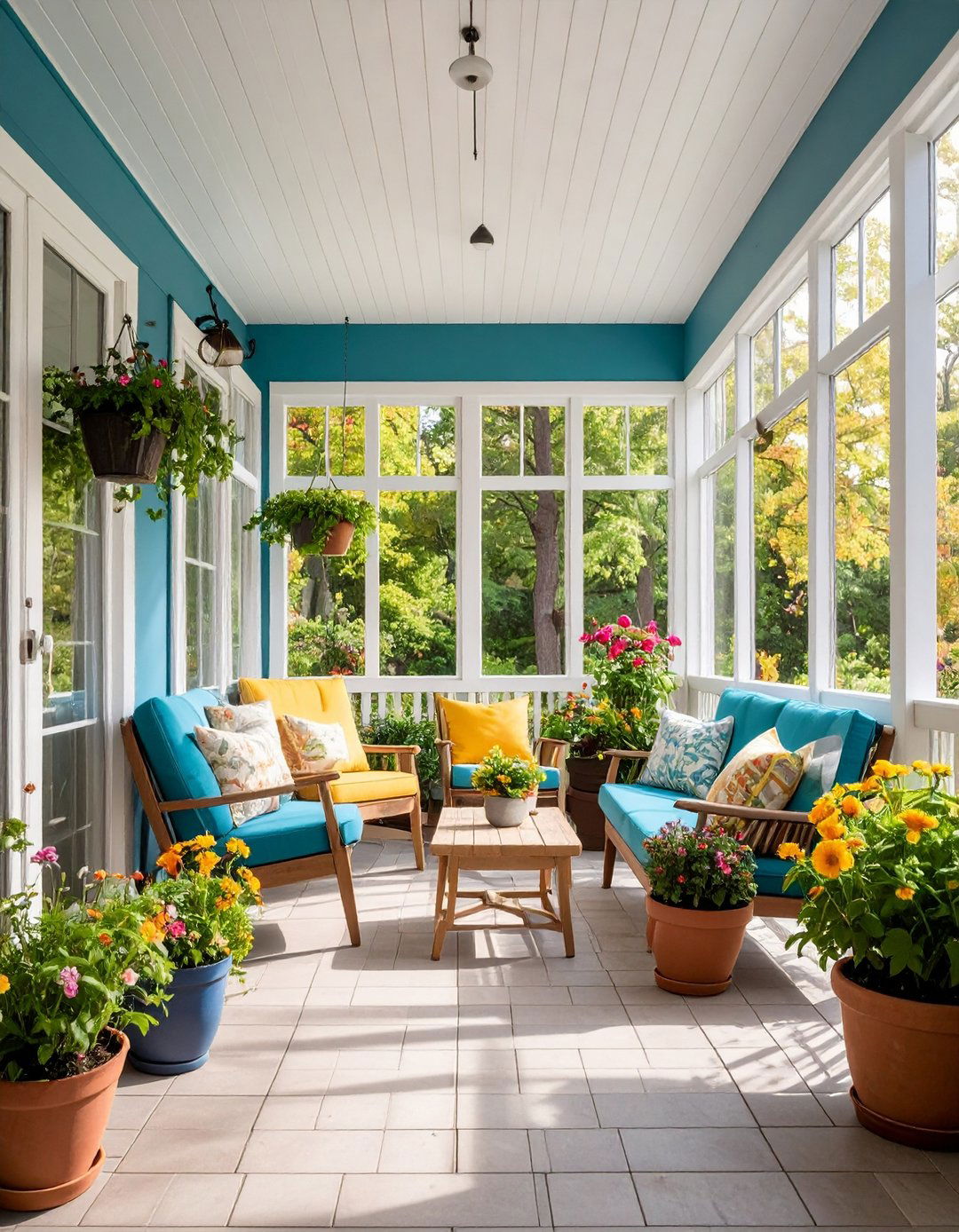
What if your entire porch could become a greenhouse sanctuary? Converting an existing screened porch or covered patio into a greenhouse creates a substantial growing area with minimal construction. This approach involves replacing screen panels with clear polycarbonate or glass panels while maintaining proper ventilation through strategically placed vents. The enclosed porch greenhouse offers protection from wind, rain, and temperature extremes while providing ample space for larger plants, raised beds, and comfortable seating areas. This design works particularly well for three-season porches that can be easily modified for winter plant protection and year-round gardening activities.
3. Mini Cold Frame Porch Setup
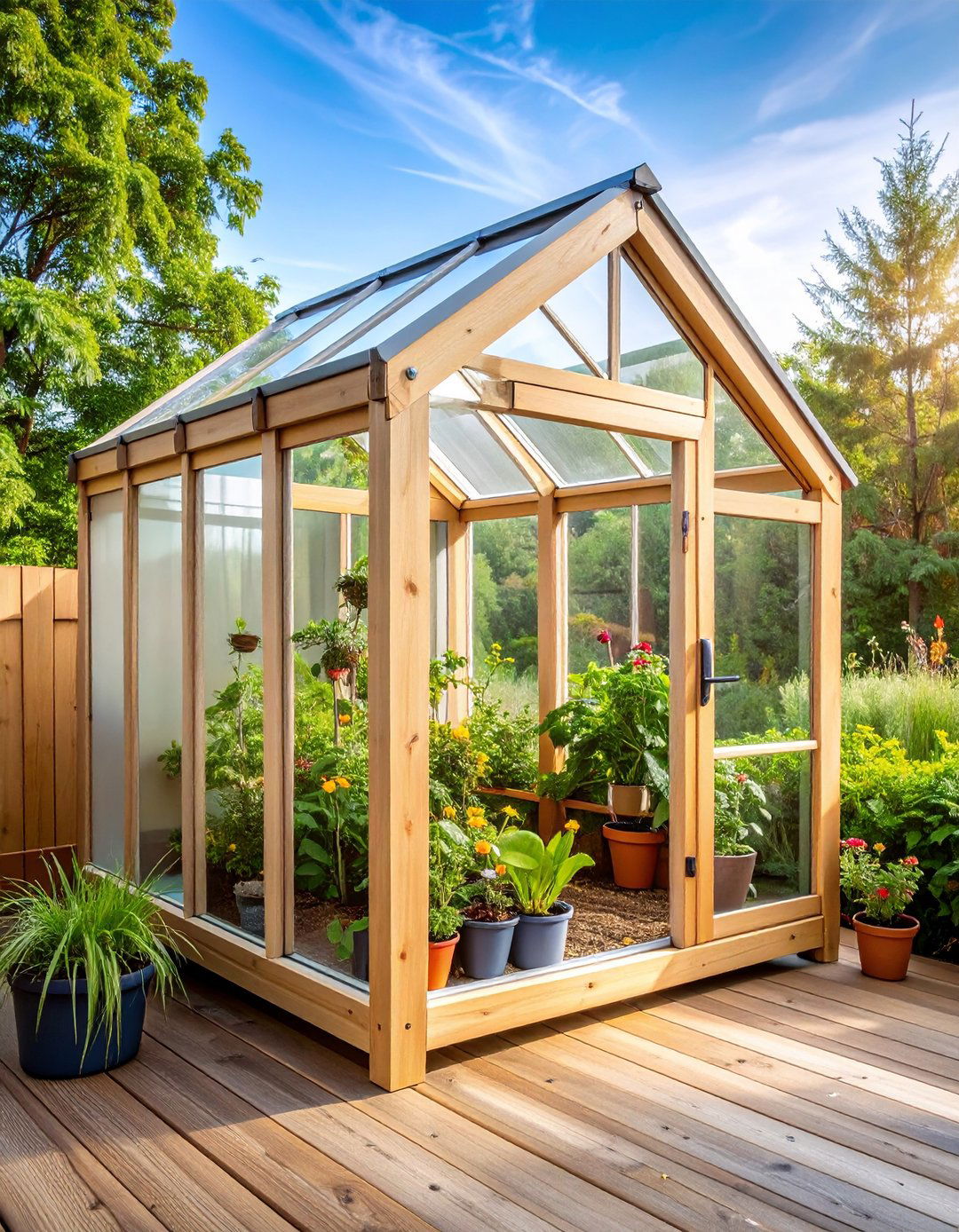
Can a small porch accommodate serious gardening potential? Mini cold frame greenhouses are perfect for compact porch spaces, typically measuring 3-4 feet in length and 2-3 feet in width. These structures feature hinged tops that can be opened for ventilation and plant access, while the enclosed design creates a microclimate that extends the growing season significantly. Cold frames work exceptionally well for starting seedlings, hardening off plants, and growing cold-tolerant vegetables through winter months. The low profile design fits seamlessly on most porch areas without overwhelming the space, and many models include wheels for easy repositioning to follow optimal sun exposure throughout the day.
4. Portable Wheeled Greenhouse
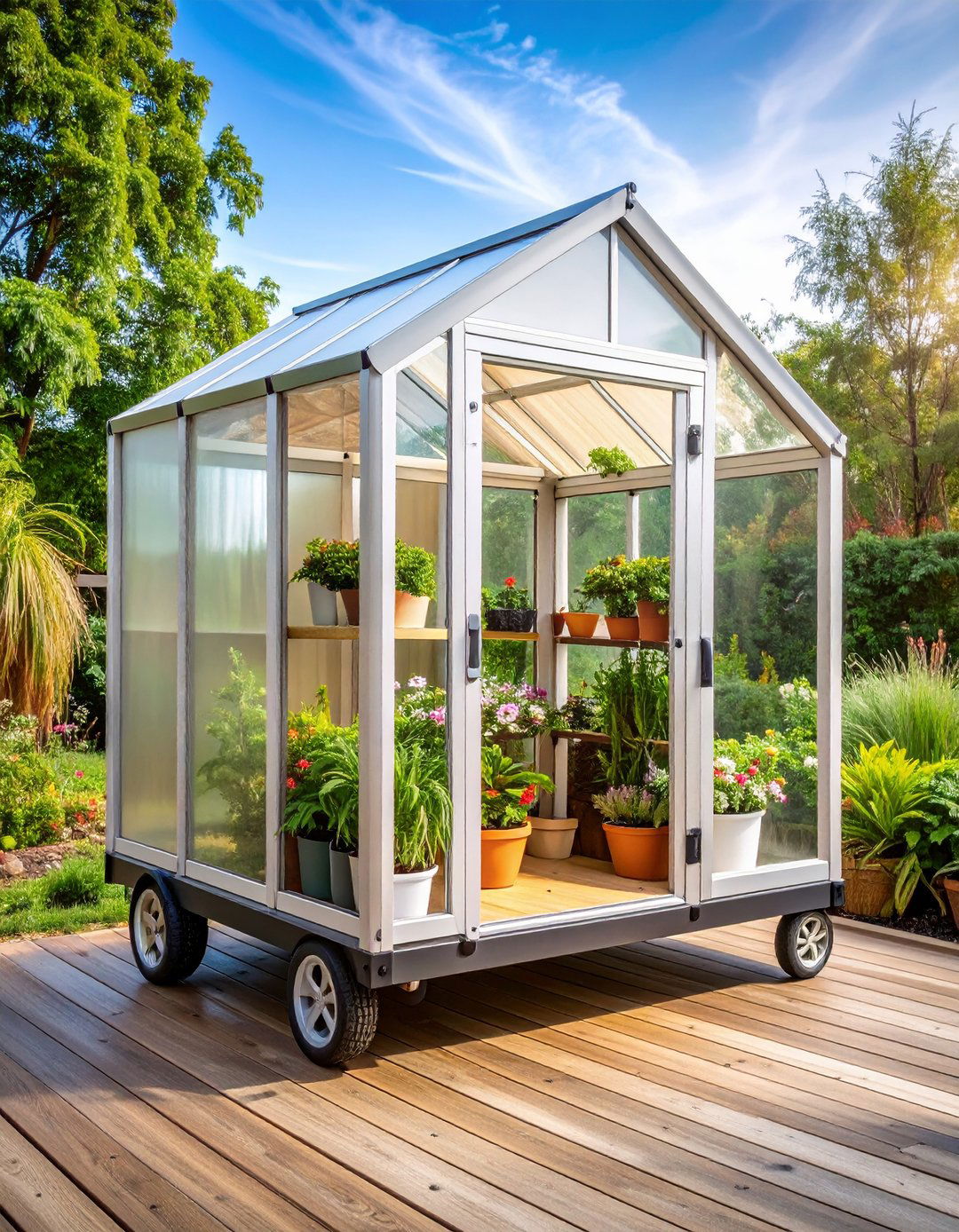
Why commit to a permanent structure when flexibility offers greater advantages? Portable porch greenhouses on wheels provide the ultimate versatility for seasonal gardening needs. These structures typically feature lightweight aluminum frames with clear plastic or polycarbonate panels, mounted on sturdy wheels that allow easy movement around your porch area. During harsh weather, you can roll the greenhouse to protected areas, while sunny days allow positioning for maximum light exposure. Most portable models include multiple shelving levels, providing substantial growing space within a compact footprint. The mobility factor makes these greenhouses ideal for renters or homeowners who prefer adaptable gardening solutions.
5. Window-Style Porch Greenhouse
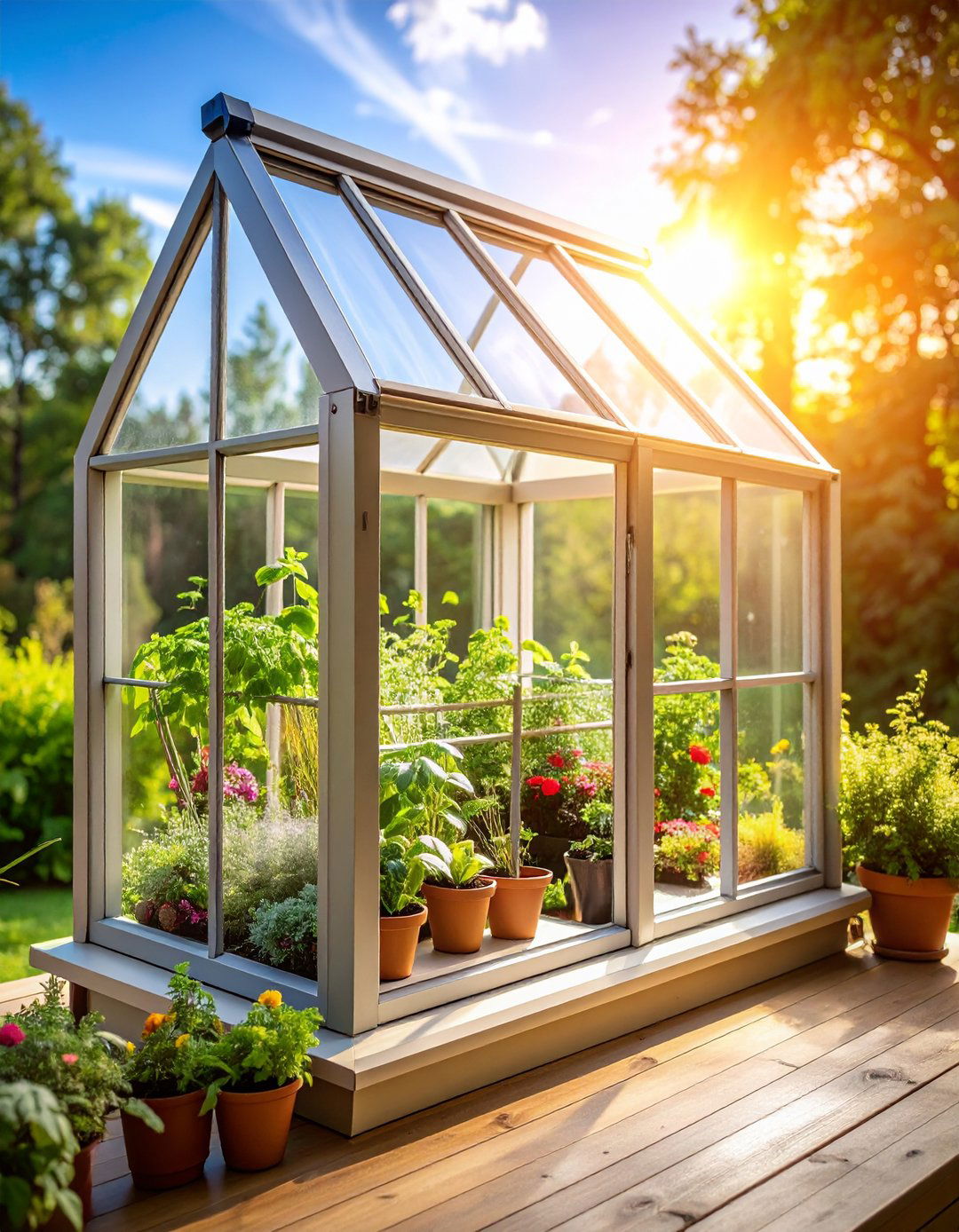
How can you create greenhouse conditions using existing porch windows? Window-style porch greenhouses attach directly to porch windows, extending the growing space outward while maintaining easy access from inside. These compact structures typically measure 2-3 feet deep and span the width of your window, creating a dedicated plant growing area that receives optimal light. The design includes hinged panels for ventilation and plant care, while the connection to your porch provides convenient access during all weather conditions. This approach works particularly well for herb gardens, starting seedlings, or maintaining houseplants that need extra protection during temperature extremes.
6. Retractable Porch Greenhouse
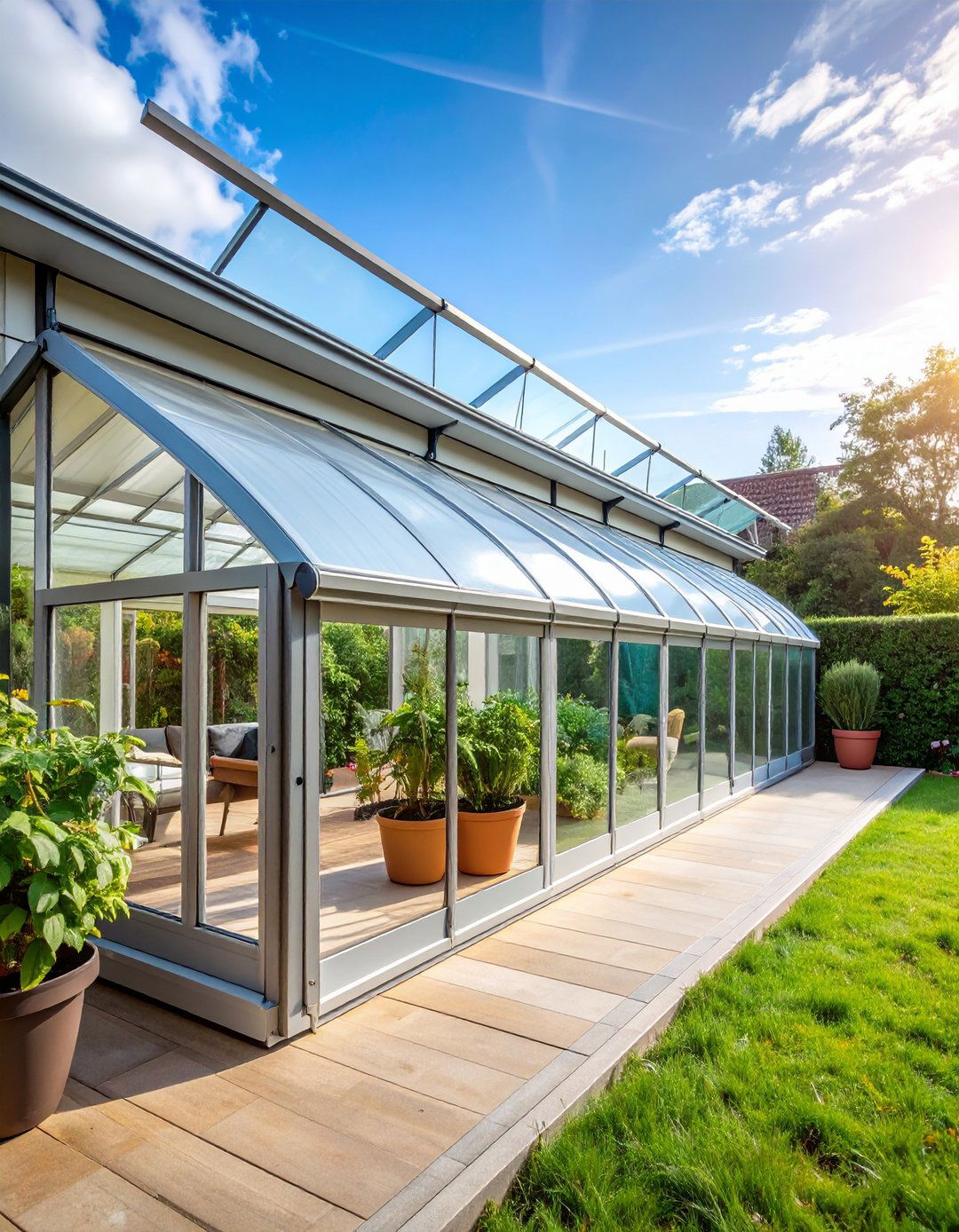
What if your greenhouse could adapt to changing weather conditions instantly? Retractable porch greenhouses feature fold-down or roll-up panels that can be adjusted based on seasonal needs and weather conditions. During warm months, panels can be rolled up to create an open-air growing space with natural ventilation, while cold weather allows complete enclosure for plant protection. These innovative designs typically use PVC pipe frames with attached plastic sheeting that can be easily manipulated through pulley systems or manual adjustment. The retractable feature provides maximum flexibility for different plant requirements throughout the growing season while maintaining the structure's protective capabilities.
7. PVC Pipe Porch Greenhouse
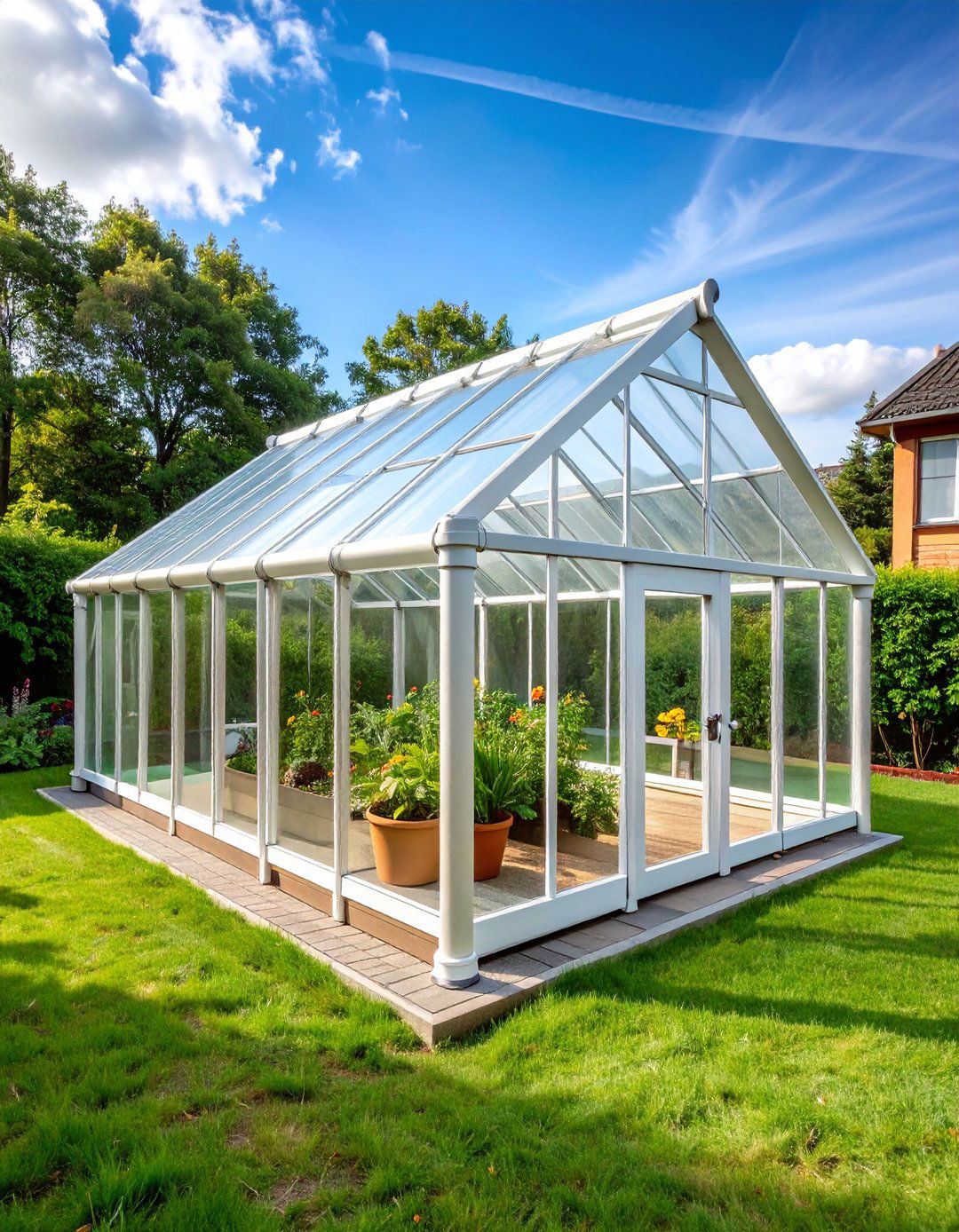
How can budget-conscious gardeners create effective porch greenhouses? PVC pipe greenhouses offer an affordable, lightweight solution that can be easily customized to fit any porch configuration. The basic structure uses PVC pipes connected with standard fittings to create a frame that supports greenhouse plastic or clear tarp material. This design approach allows for creative shapes and sizes, from simple hoop structures to more complex geometric configurations. PVC greenhouses are particularly popular because they resist rust and corrosion while remaining easy to modify or expand as gardening needs change. The material cost remains minimal while providing effective plant protection.
8. Polycarbonate Panel Greenhouse
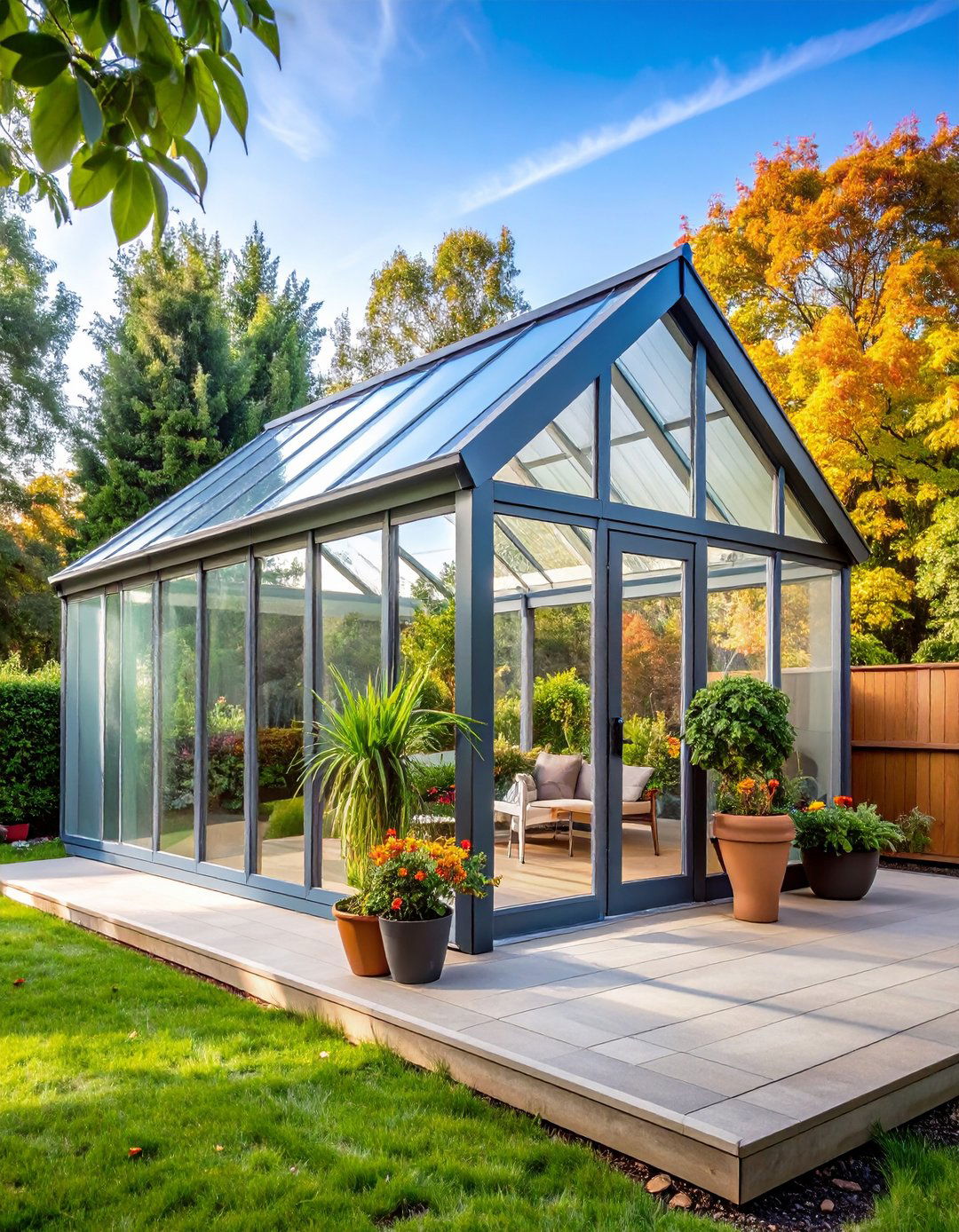
Why choose polycarbonate over glass for porch greenhouse construction? Polycarbonate panel porch greenhouses provide superior insulation and impact resistance while maintaining excellent light transmission for optimal plant growth. These structures typically feature aluminum frames that support twin-wall polycarbonate panels, creating a professional appearance that complements most home architectural styles. The panels offer better heat retention than single-pane glass while being significantly lighter and safer around high-traffic porch areas. Polycarbonate greenhouses also include integrated ventilation systems and can accommodate various accessories like automatic vent openers, heating systems, and specialized shelving configurations for different plant types.
9. Recycled Window Greenhouse
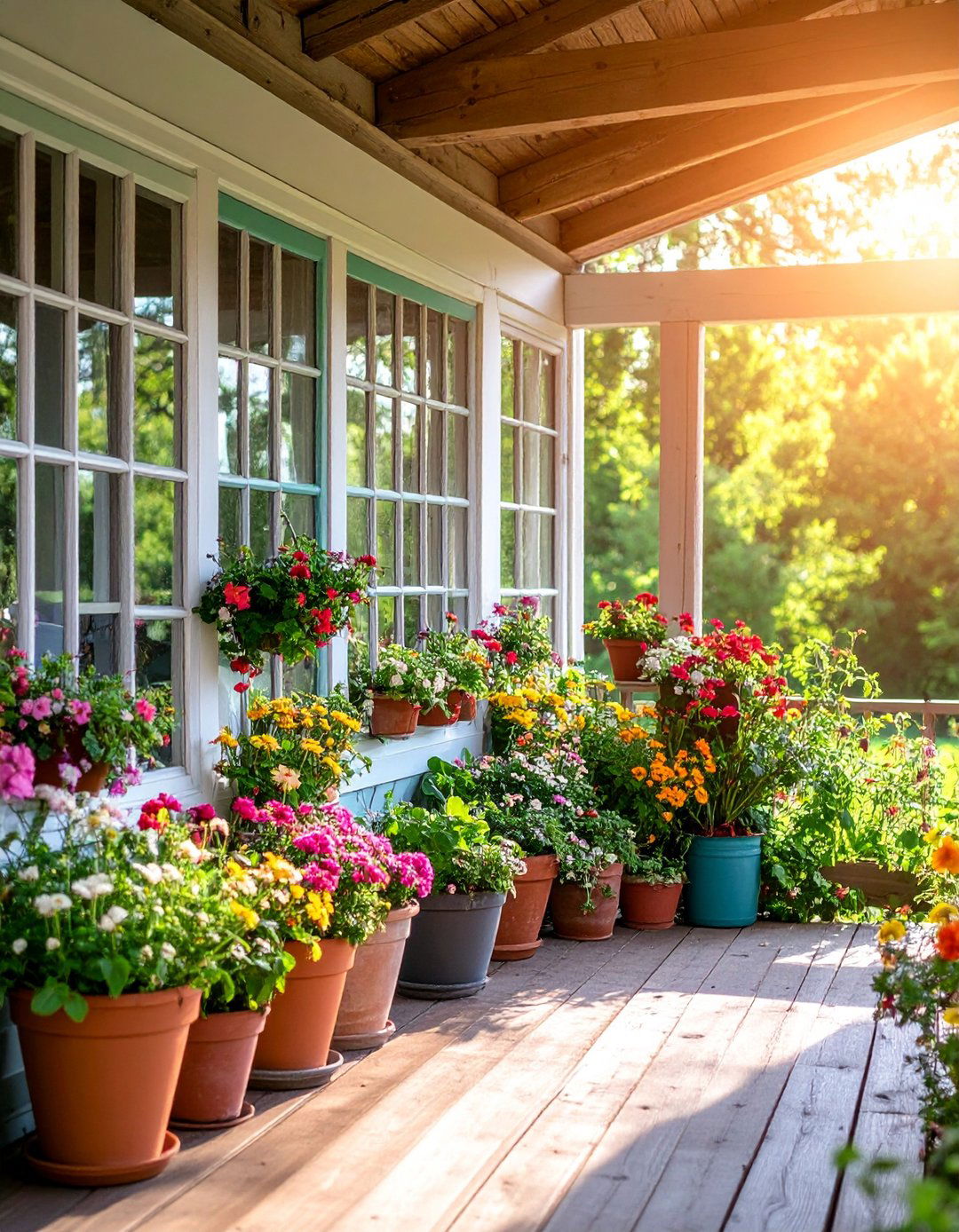
How can salvaged materials create unique porch greenhouse designs? Recycled window greenhouses use reclaimed windows and doors to create charming, eclectic structures with character and environmental benefits. This approach involves collecting various sized windows and designing a custom frame that accommodates the different dimensions, creating a unique patchwork appearance. Old storm doors can serve as entrances, while vintage windows provide walls and roof sections. The recycled approach often results in interesting architectural details and excellent functionality at a fraction of the cost of new materials. These greenhouses work particularly well on rustic or cottage-style porches where the varied window sizes add visual interest.
10. Raised Bed Porch Greenhouse
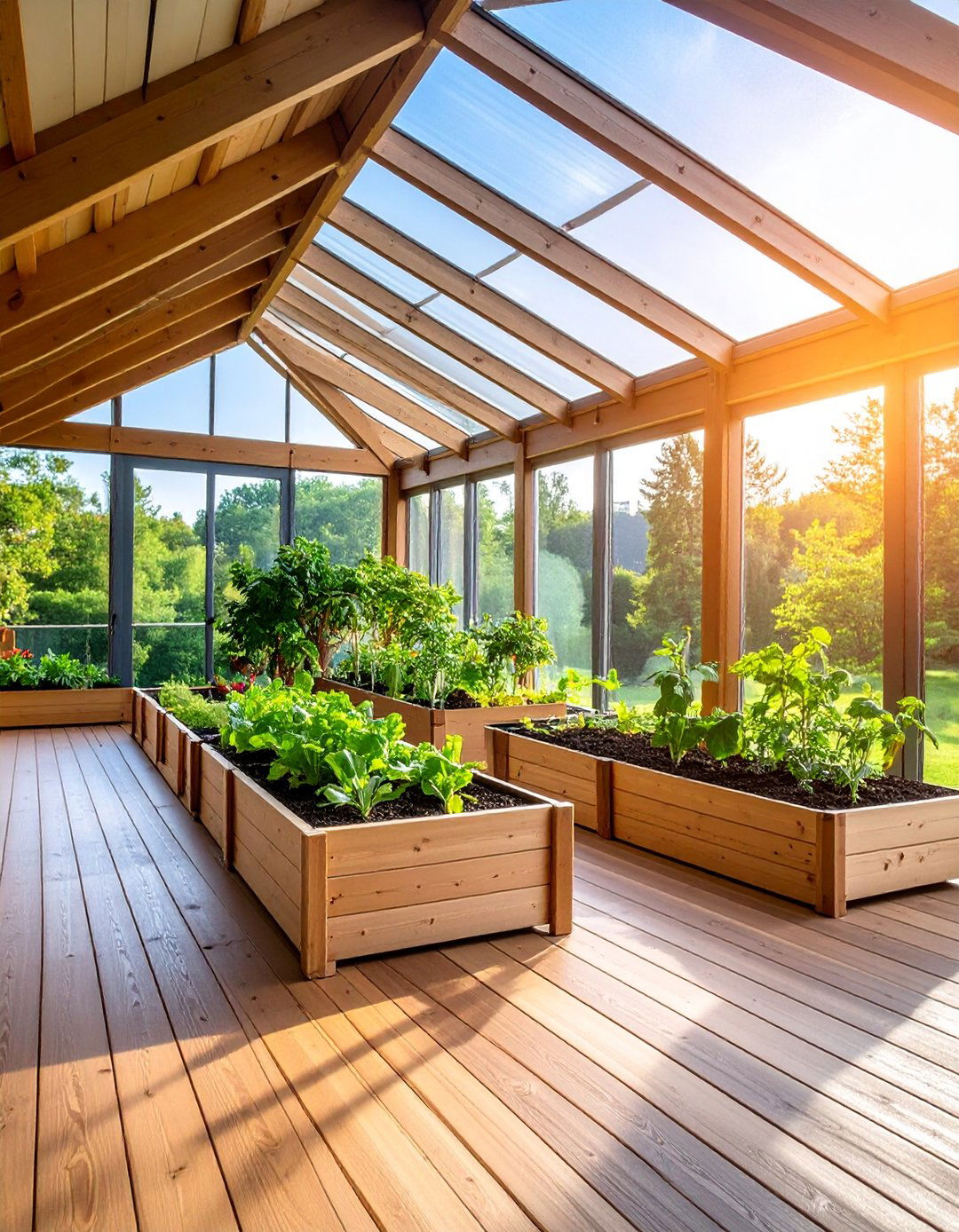
Can elevated growing areas enhance porch greenhouse functionality? Raised bed porch greenhouses combine the benefits of elevated planting areas with protective greenhouse structures, creating ergonomic growing conditions that reduce back strain. These systems typically feature built-in planting boxes at comfortable working heights, covered by removable or hinged greenhouse panels. The raised bed design provides excellent drainage, soil control, and easier maintenance access, while the greenhouse covering protects plants from weather extremes. This configuration works exceptionally well for vegetable gardening, herb production, and flower cultivation, offering both practical growing conditions and attractive visual appeal on covered porches.
11. Vertical Growing Porch Greenhouse
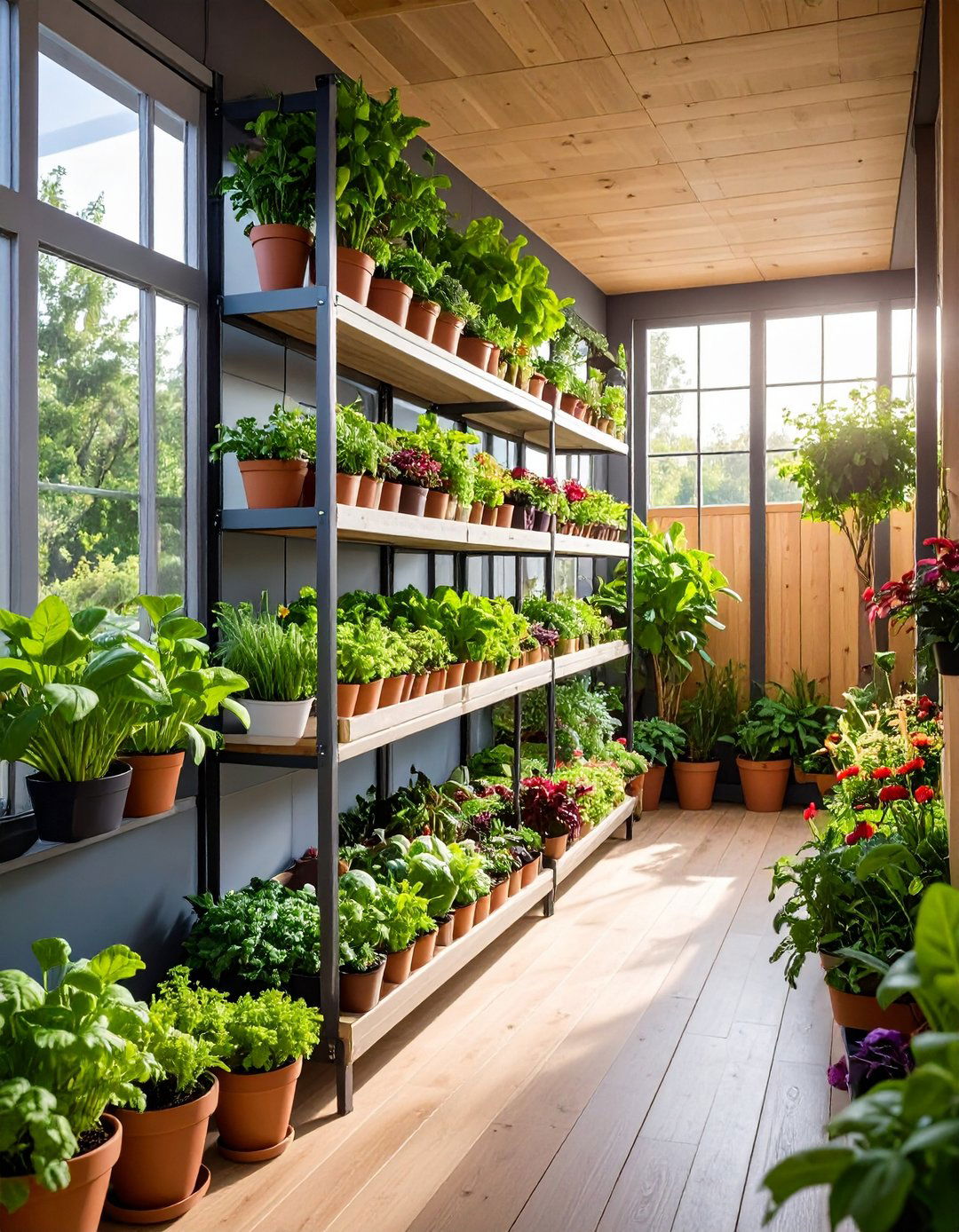
How can vertical space maximize limited porch greenhouse areas? Vertical porch greenhouses utilize multi-level shelving systems within enclosed structures to dramatically increase growing capacity without expanding the footprint. These designs typically feature 4-6 shelving levels within a narrow, tall structure that fits against porch walls or in corner spaces. Each level can accommodate different plant types based on light and temperature requirements, with top shelves suitable for sun-loving plants and lower levels perfect for shade-tolerant varieties. The vertical approach works particularly well for apartment balconies and small porches where horizontal space is limited but vertical clearance allows for substantial growing capacity.
12. A-Frame Porch Greenhouse
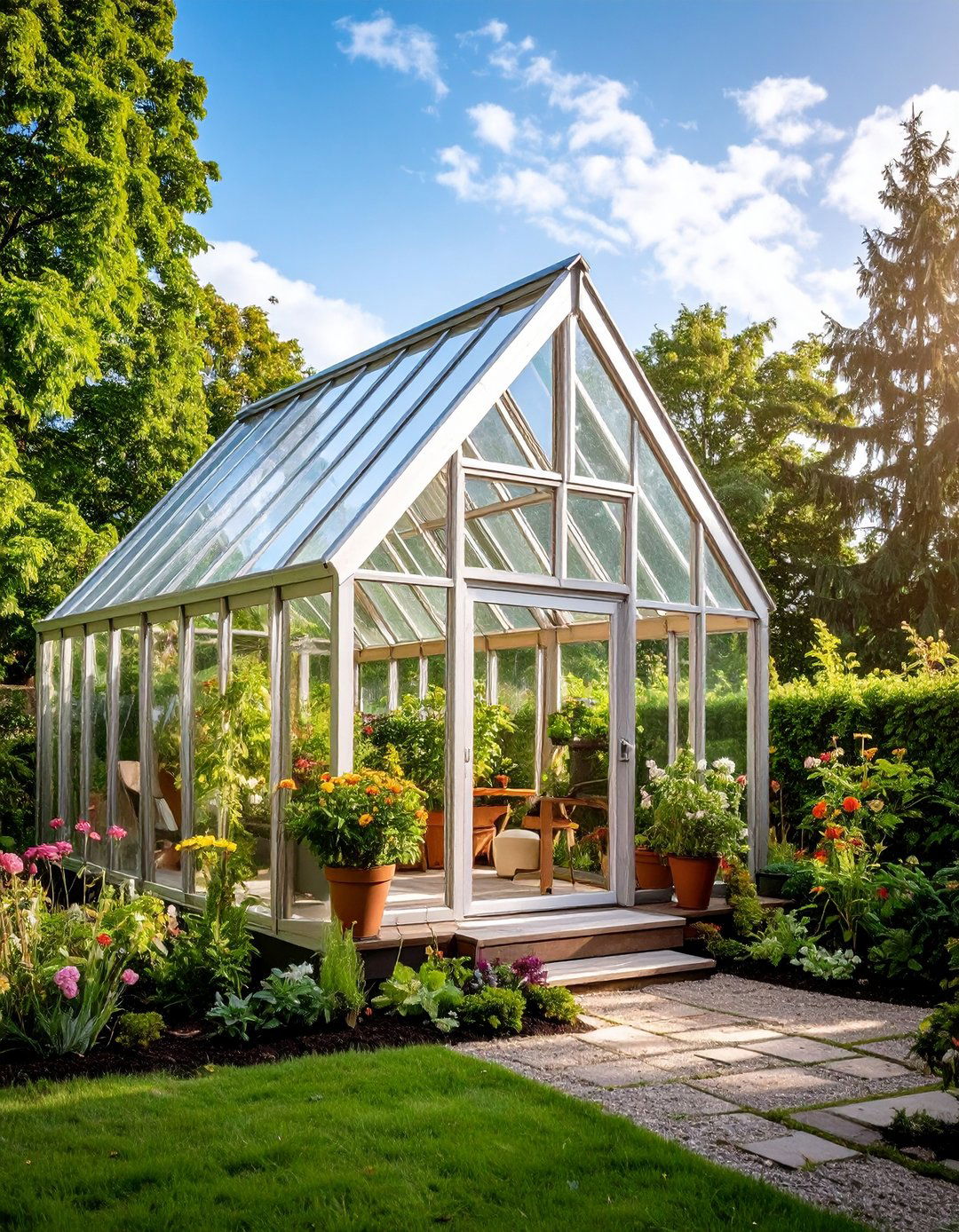
What makes A-frame designs particularly effective for porch greenhouse applications? A-frame porch greenhouses feature triangular construction that provides excellent structural stability while maximizing light exposure throughout the day. The steep-angled sides allow rain and snow to shed easily while creating optimal sun penetration angles for plant growth. These structures typically span 6-8 feet at the base and can be positioned lengthwise along porch edges or perpendicular to the house for different spatial configurations. The A-frame design also provides good headroom in the center while maintaining a relatively low profile that doesn't obstruct views or overwhelm porch proportions.
13. Geodesic Dome Porch Greenhouse
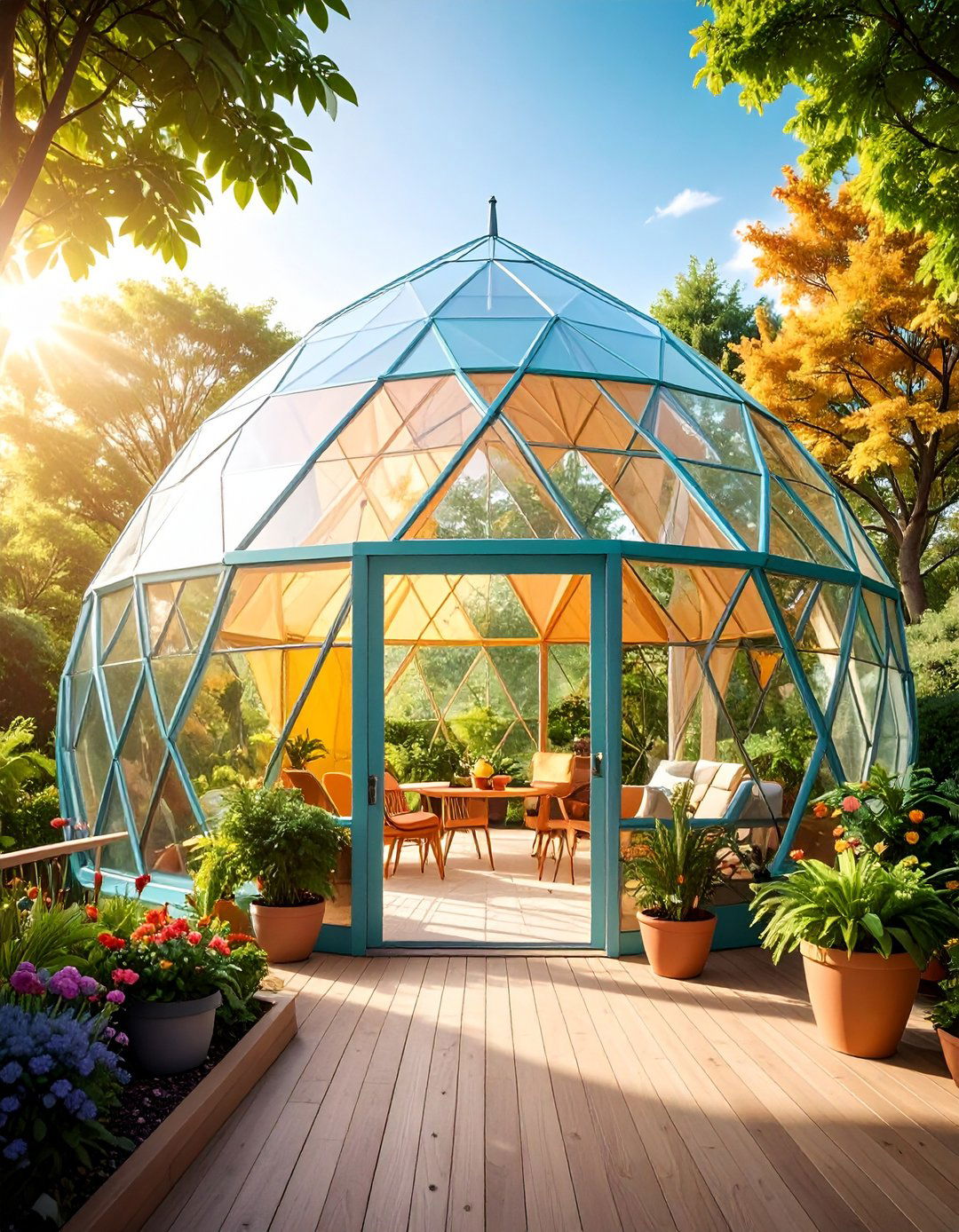
How can geometric design principles enhance porch greenhouse functionality? Geodesic dome porch greenhouses create striking focal points while providing superior structural strength and optimal light distribution. These spherical or semi-spherical structures use triangular panels connected in geometric patterns that distribute stress evenly throughout the frame. The dome shape naturally sheds wind and weather while maximizing interior volume relative to surface area, creating efficient heating and cooling characteristics. Though more complex to construct than traditional designs, geodesic greenhouses offer unique aesthetic appeal and exceptional durability, making them suitable for porches that can accommodate their distinctive architectural presence and structural requirements.
14. Gothic Arch Porch Greenhouse
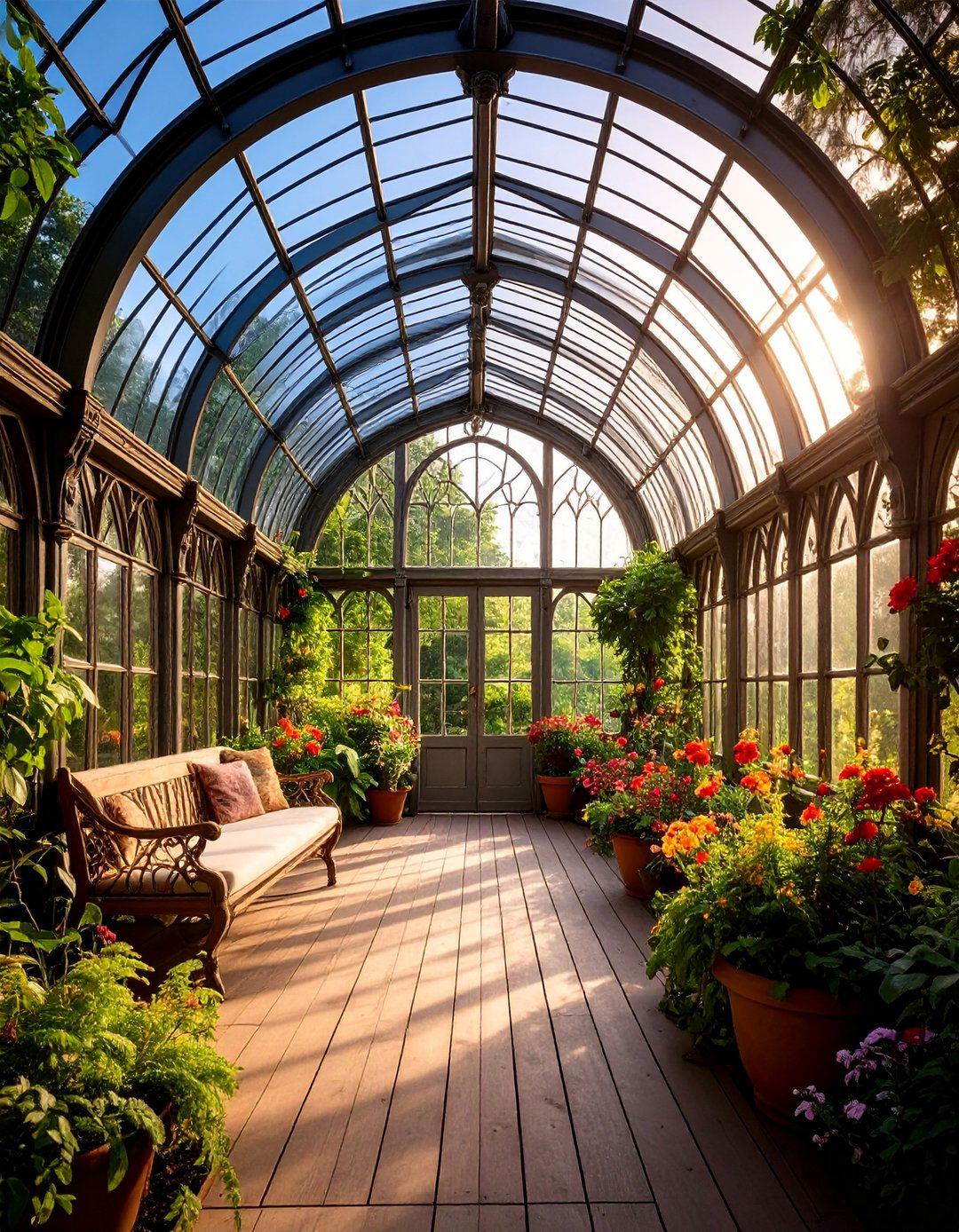
Why do curved designs offer advantages for porch greenhouse applications? Gothic arch porch greenhouses feature curved roof lines that combine structural strength with elegant aesthetics, creating cathedral-like growing spaces that complement traditional home architecture. The arched design naturally sheds snow and rain while providing excellent headroom throughout the interior space. These structures typically use bent metal or laminated wood ribs covered with polycarbonate panels or greenhouse plastic. The curved shape also promotes natural air circulation, reducing hot spots and creating more uniform growing conditions. Gothic arch designs work particularly well on porches with adequate height clearance and complement homes with arched windows or doorways.
15. Hoop House Porch Design
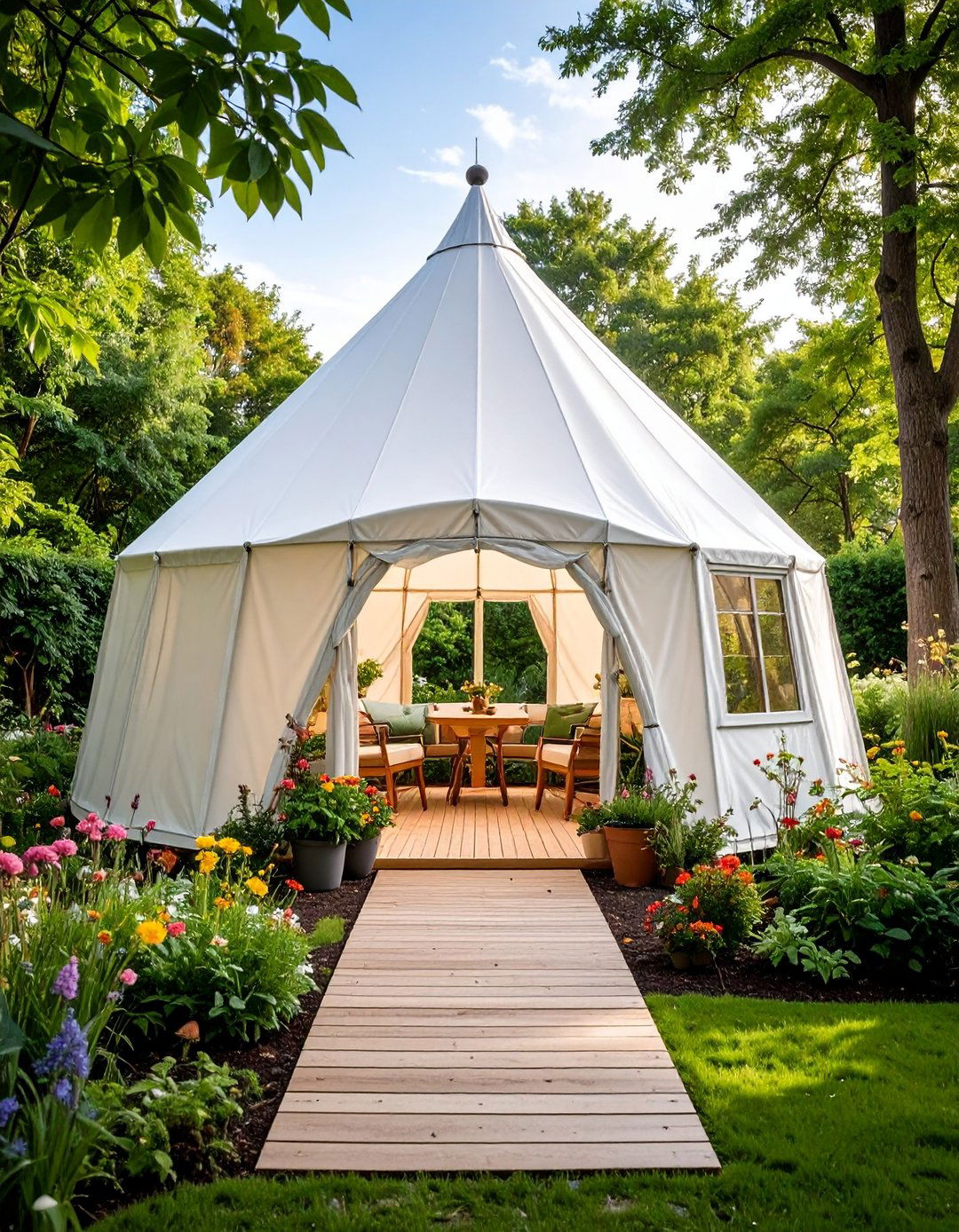
How can simple construction create effective porch greenhouse protection? Hoop house porch greenhouses use bent metal or PVC pipes to create semi-circular structures covered with greenhouse plastic, providing cost-effective plant protection with minimal construction complexity. These designs can be built to span the width of covered porches or configured as lean-to structures against porch walls. The hoop construction allows for easy covering removal during warm weather and quick reinstallation when protection is needed. This approach works particularly well for seasonal plant protection, extending growing seasons for vegetables and providing winter shelter for tender perennials without permanent structural modifications.
16. Solar-Powered Porch Greenhouse
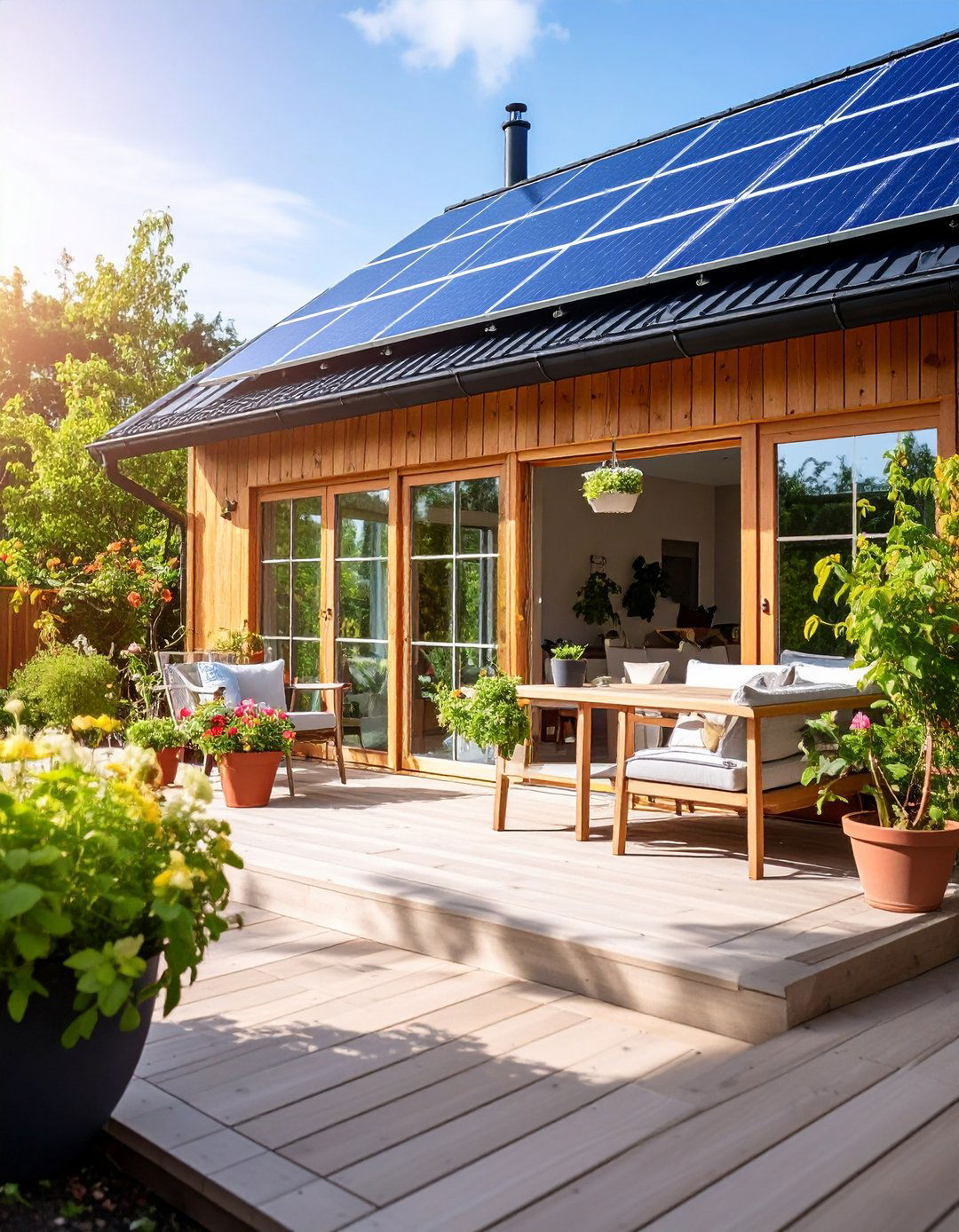
Can renewable energy enhance porch greenhouse functionality while reducing operating costs? Solar-powered porch greenhouses incorporate photovoltaic panels to operate ventilation fans, heating systems, and automatic watering equipment without relying on electrical connections. Small solar panels can power circulation fans that prevent overheating during summer months, while battery backup systems ensure continued operation during cloudy periods. Some systems include solar-powered heating elements for winter plant protection, creating truly independent growing environments. The solar approach works particularly well for porches without convenient electrical access and appeals to environmentally conscious gardeners seeking sustainable growing solutions that operate independently of household electrical systems.
17. Multi-Tier Shelf Greenhouse
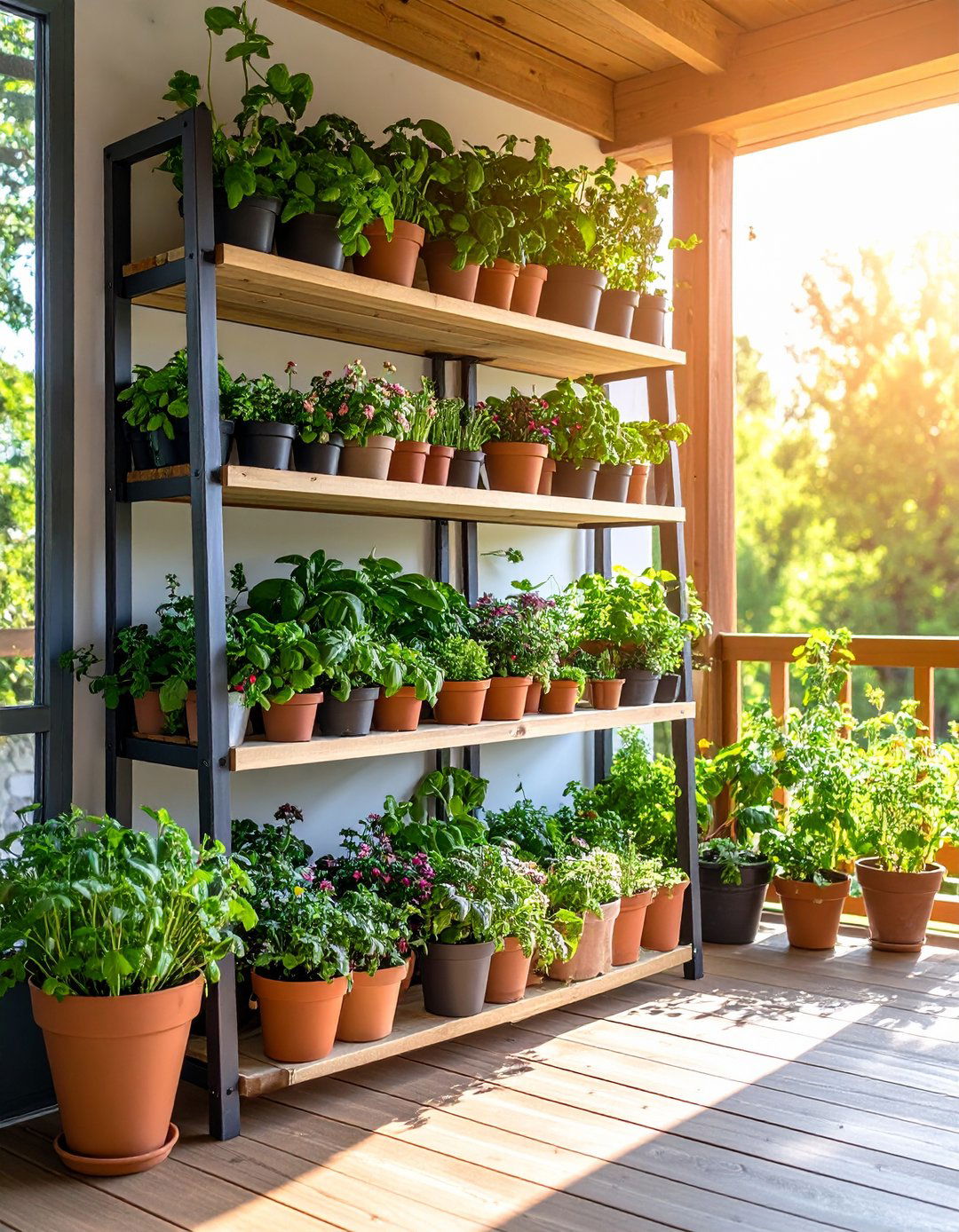
How can organized shelving systems maximize porch greenhouse growing capacity? Multi-tier shelf porch greenhouses feature integrated shelving systems that create multiple growing levels within compact structures, dramatically increasing the number of plants that can be accommodated. These designs typically include 3-5 shelving levels with adjustable heights to accommodate different plant sizes and growth stages. The shelving systems often incorporate drip trays to protect lower levels from watering overflow, while wire or slat construction allows adequate air circulation throughout the structure. This approach works exceptionally well for starting seedlings, growing herbs, and maintaining collections of smaller plants in organized, accessible arrangements.
18. Hanging Garden Porch Greenhouse
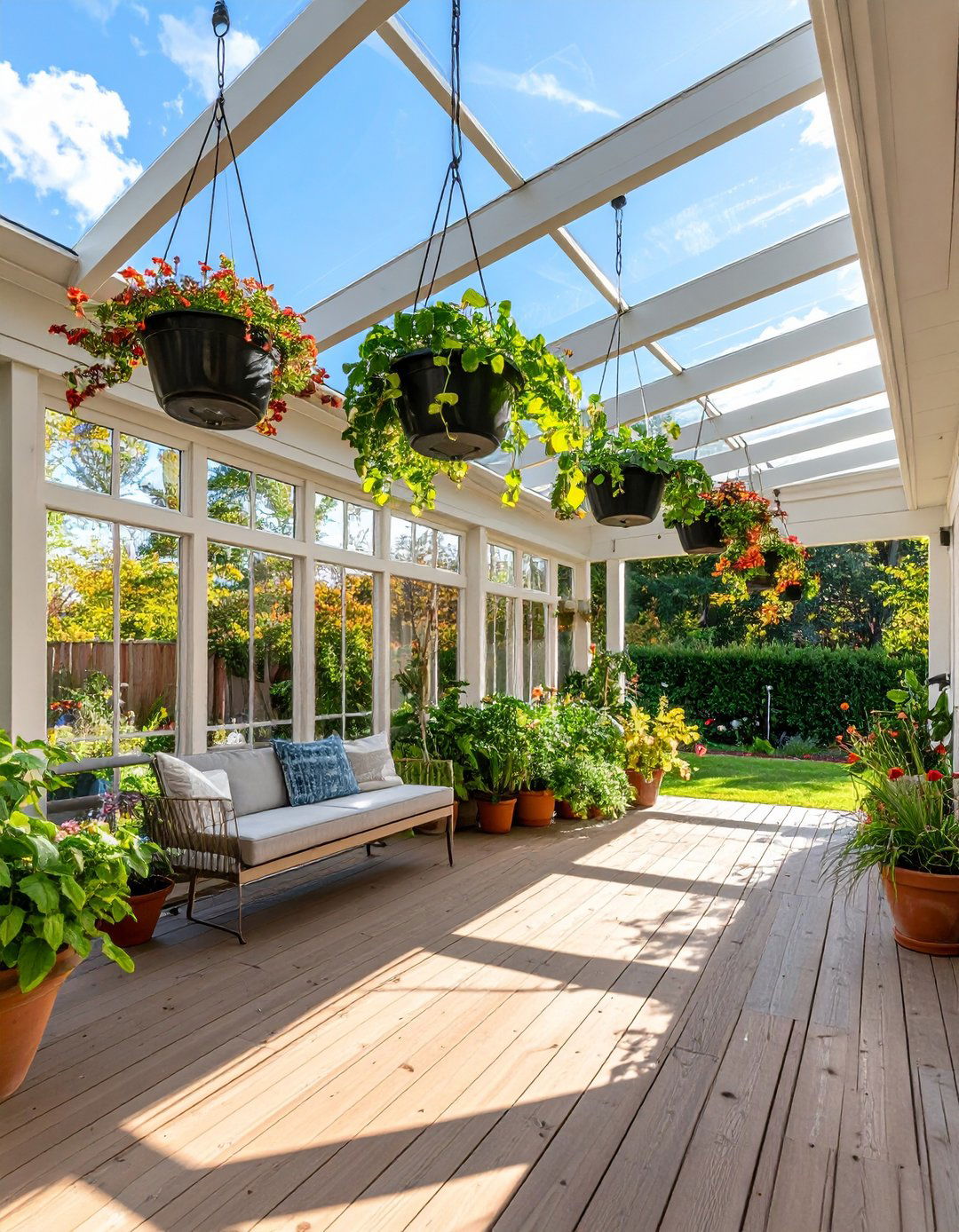
What advantages do suspended growing systems offer for porch greenhouse gardening? Hanging garden porch greenhouses utilize overhead space for suspended planters while maintaining floor space for other plants or activities. These systems typically feature strong overhead support structures that accommodate hanging baskets, vertical growing towers, and suspended growing systems. The combination of hanging and floor-level plants creates layered growing environments that maximize space utilization while creating visually interesting displays. Hanging systems work particularly well for trailing plants, air plants, and species that benefit from improved air circulation. The elevated positioning also provides protection from ground-dwelling pests while making plant care more convenient.
19. Herb Garden Porch Greenhouse
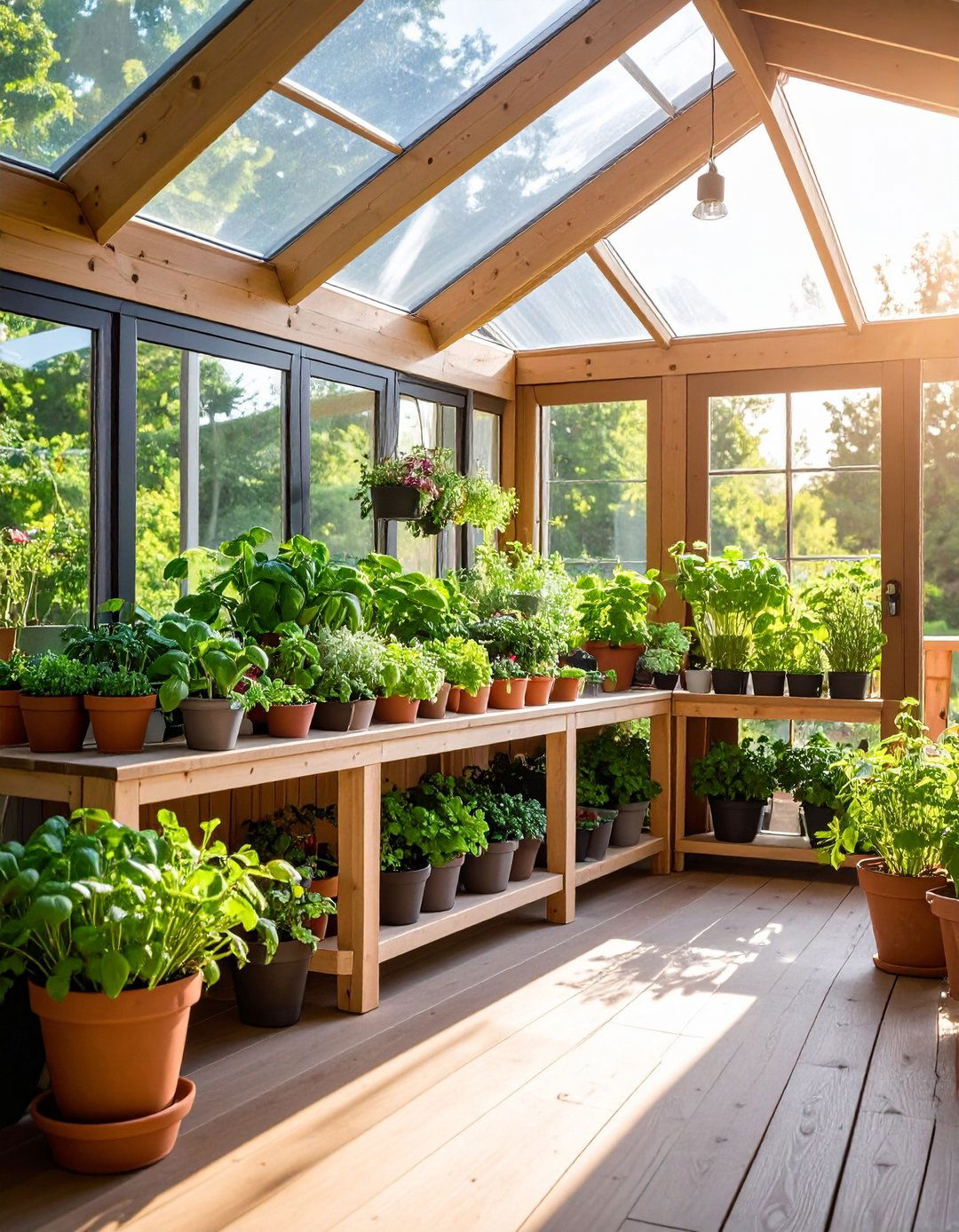
How can specialized designs optimize herb cultivation in porch greenhouse settings? Herb garden porch greenhouses feature design elements specifically tailored for culinary plant cultivation, including convenient access doors, integrated harvesting areas, and organized growing systems. These structures typically include multiple small growing compartments that allow for organized herb varieties, while built-in work surfaces provide space for harvesting and processing. The design often incorporates easy-to-clean surfaces and drainage systems that accommodate frequent watering and harvesting activities. Herb-focused greenhouses work particularly well near kitchen entrances, providing convenient access to fresh culinary ingredients while maintaining optimal growing conditions for Mediterranean and tropical herbs.
20. Seed Starting Porch Station
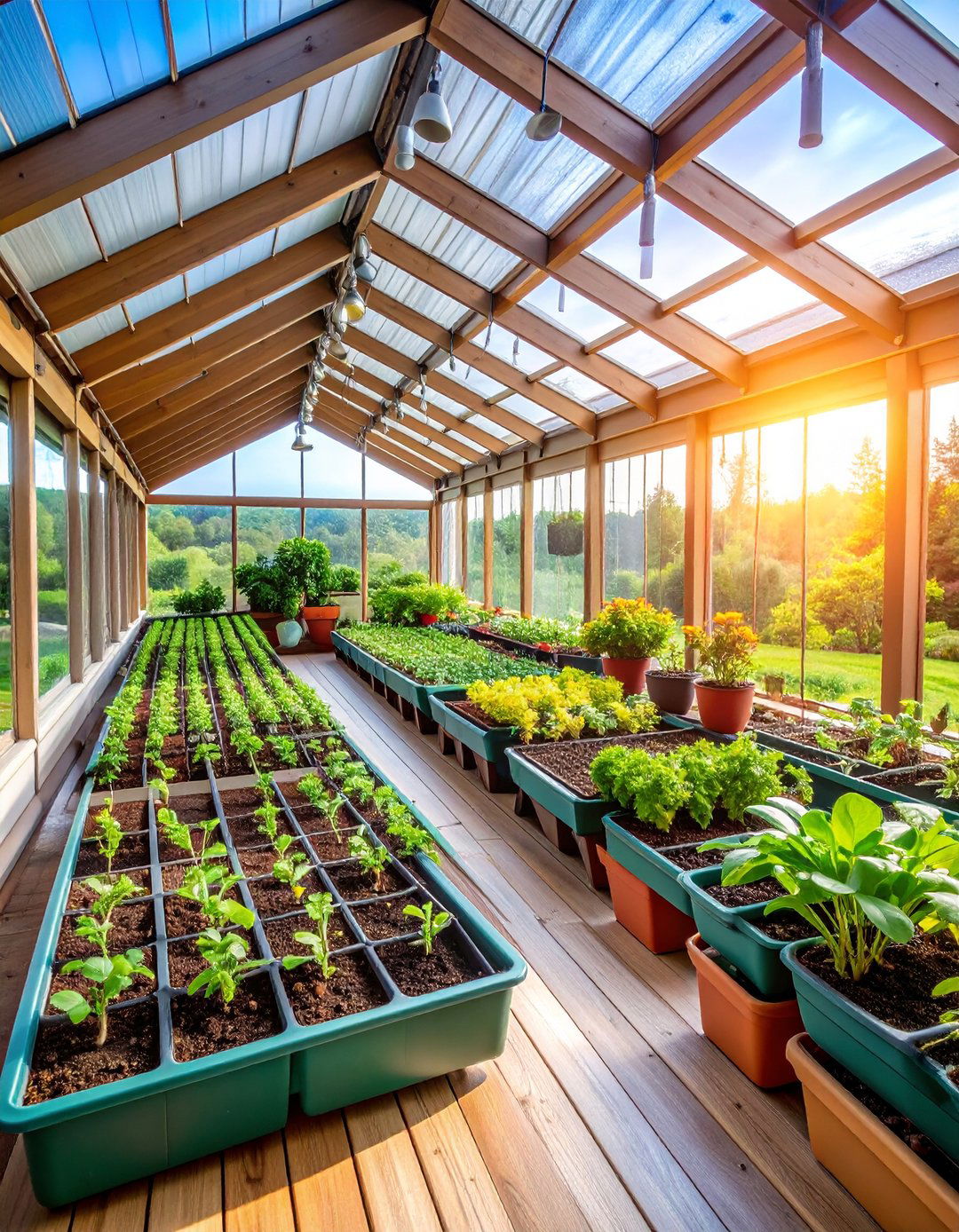
Why do dedicated seed starting facilities enhance gardening success rates? Seed starting porch greenhouses focus on providing optimal conditions for germination and early plant development, featuring adjustable heating systems, humidity controls, and graduated growing areas. These structures typically include heated propagation areas for temperature-sensitive seeds, intermediate growing zones for developing seedlings, and hardening-off areas that gradually acclimate plants to outdoor conditions. The specialized design often incorporates grow lights for consistent illumination, automated watering systems for uniform moisture, and ventilation controls that maintain ideal atmospheric conditions. This approach significantly improves germination rates and produces stronger seedlings for transplanting to outdoor gardens.
21. Alpine Plant Porch Greenhouse
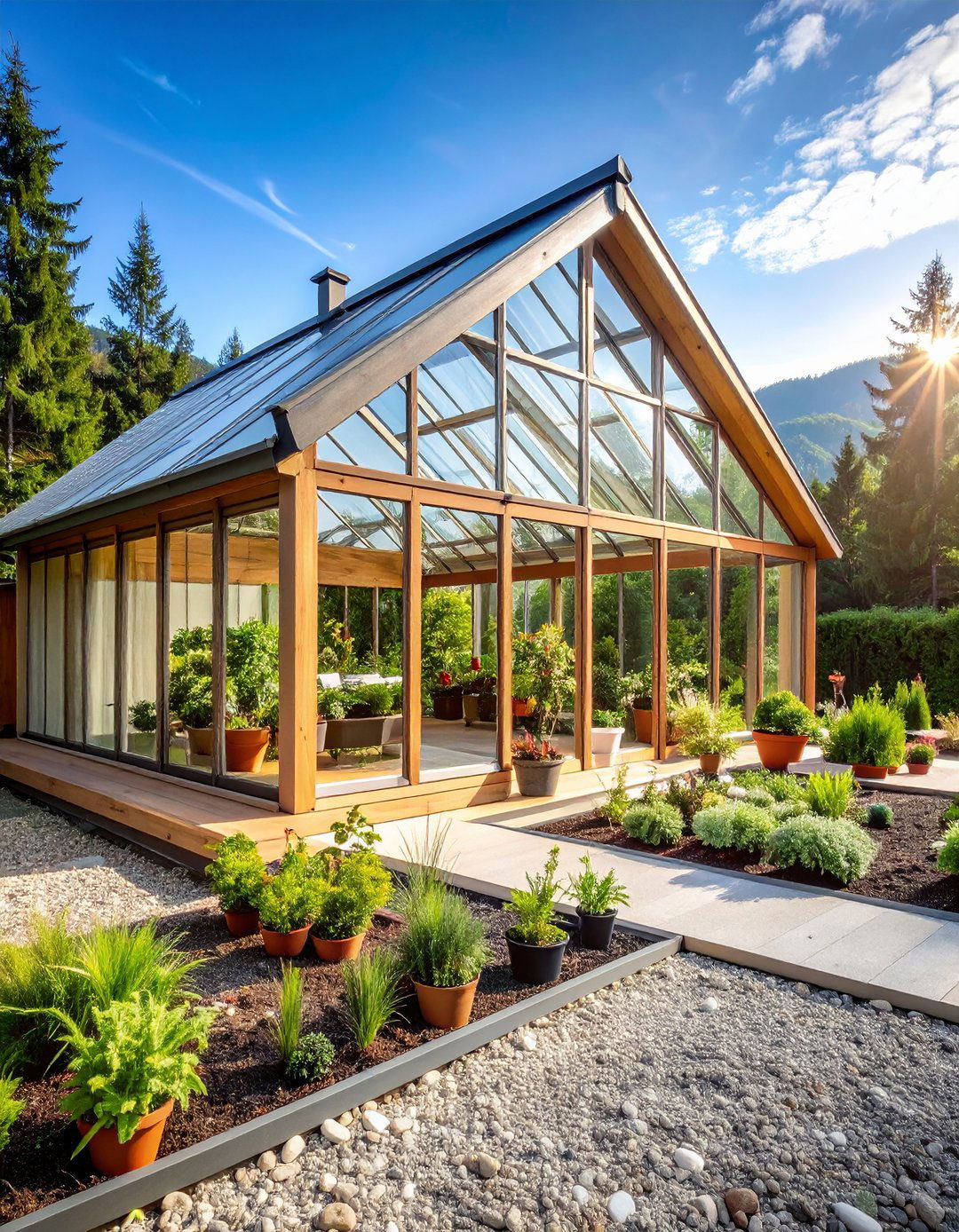
How can porch greenhouses accommodate specialized plant collections with unique requirements? Alpine plant porch greenhouses feature enhanced ventilation systems and specialized drainage configurations designed for mountain plants that require excellent air circulation and precise moisture control. These structures typically include increased vent openings, gravel-based growing surfaces, and protection from excessive moisture during winter dormancy periods. The design often incorporates adjustable roof sections that can be opened during favorable weather while providing protection during extreme conditions. Alpine greenhouses work particularly well for rock garden enthusiasts and collectors of specialized mountain plants that require protection from temperature extremes while maintaining excellent drainage and air movement.
22. Orchid Cultivation Porch House
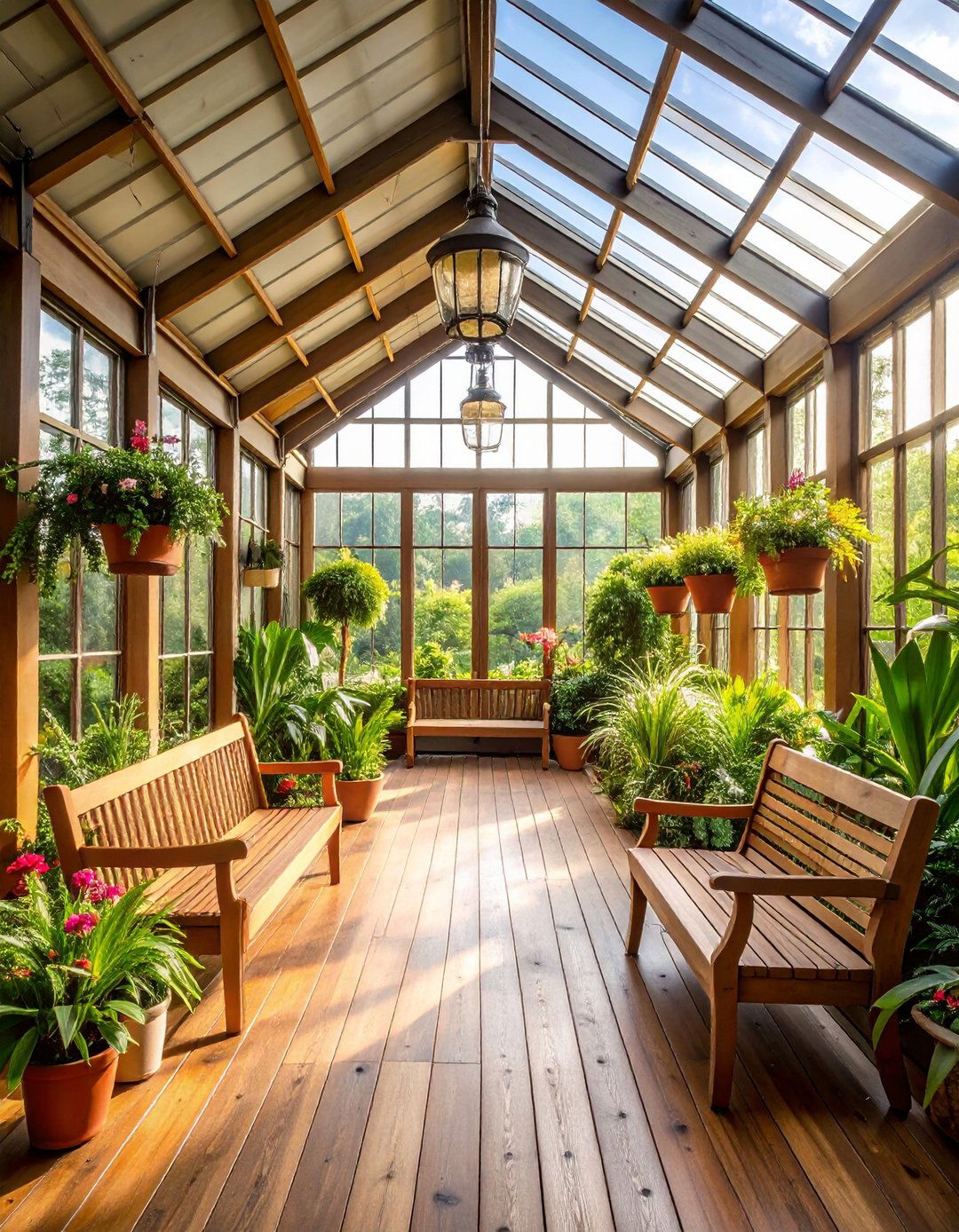
What specific design features support successful orchid growing in porch greenhouse environments? Orchid porch greenhouses incorporate humidity control systems, filtered lighting, and specialized air circulation designed for epiphytic plant cultivation. These structures typically feature misting systems or humidity trays that maintain optimal moisture levels, while filtered glazing prevents direct sunlight that can damage sensitive orchid foliage. The design often includes slatted benches that promote air circulation around plant roots, while temperature control systems maintain the stable conditions many orchid species require. This specialized approach creates ideal conditions for both beginner-friendly orchids and rare species that require precise environmental control.
23. Recycled Bottle Greenhouse
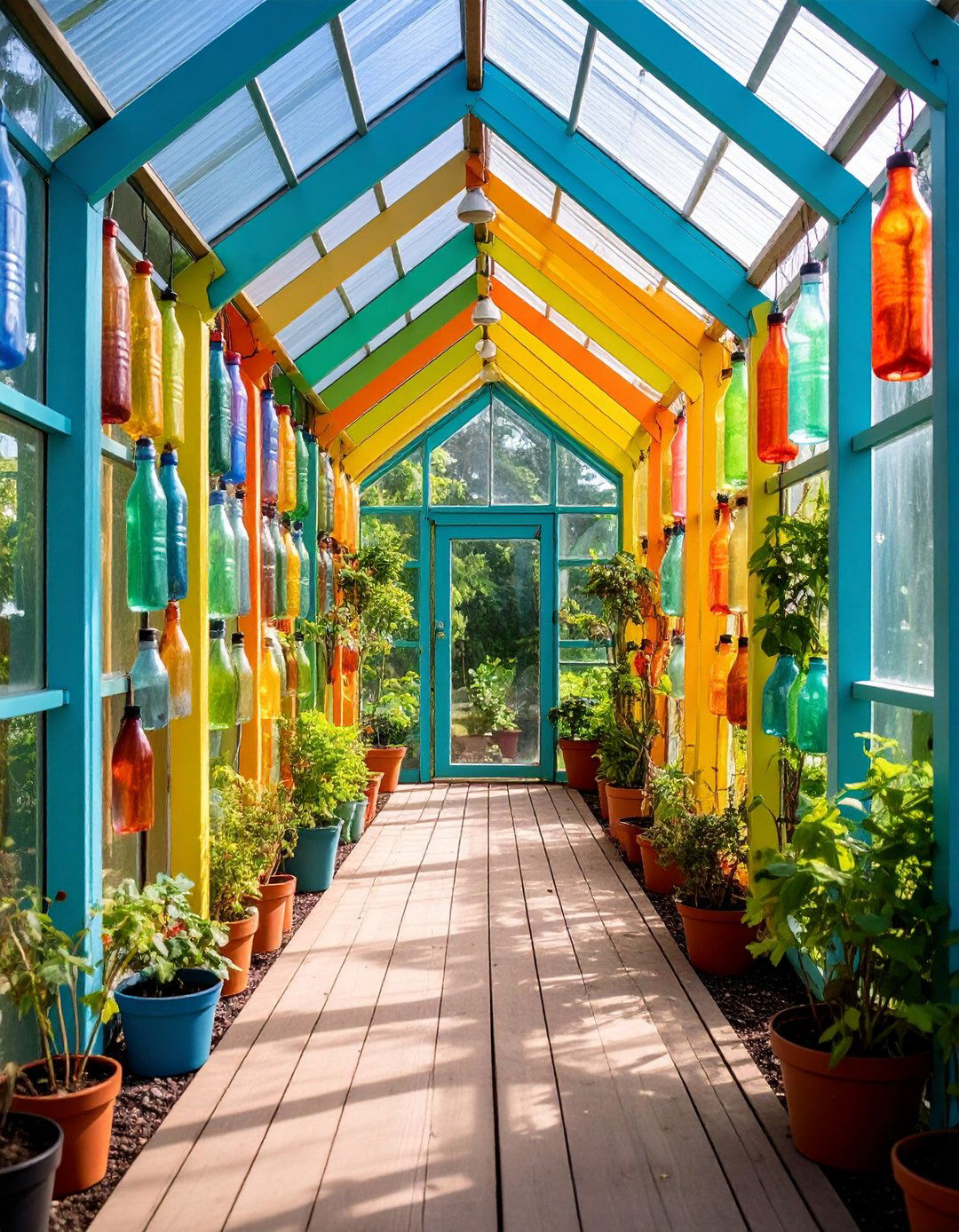
How can waste materials contribute to effective porch greenhouse construction? Recycled bottle porch greenhouses use plastic bottles as building materials, creating insulated walls that provide excellent heat retention while recycling waste materials. The construction involves filling bottles with water or sand for thermal mass, then stacking them between wooden or metal framework to create walls. This approach provides excellent insulation properties while utilizing materials that would otherwise enter waste streams. The bottle construction creates interesting visual effects as light passes through the colored containers, while the thermal mass helps moderate temperature fluctuations naturally, reducing heating and cooling requirements.
24. Hydroponic Porch Greenhouse
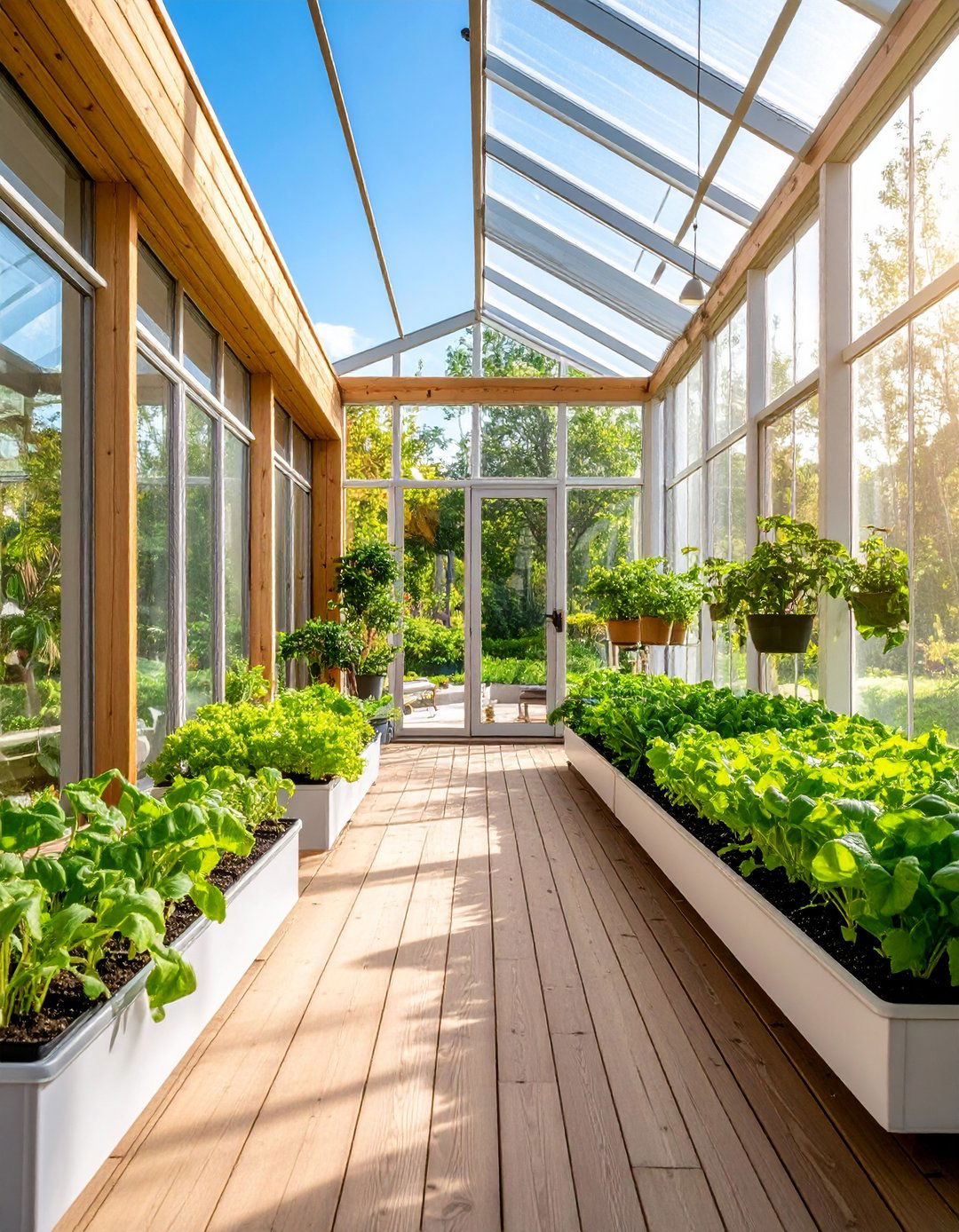
Can soilless growing systems enhance porch greenhouse productivity and cleanliness? Hydroponic porch greenhouses integrate water-based growing systems that eliminate soil while providing precise nutrient control and faster plant growth rates. These systems typically feature reservoirs, pumps, and growing channels that circulate nutrient solutions to plant roots, while the enclosed greenhouse environment provides optimal temperature and humidity control. The hydroponic approach works particularly well for leafy greens, herbs, and tomatoes, producing higher yields in smaller spaces while reducing pest problems associated with soil-based growing. This method appeals to urban gardeners seeking maximum productivity from limited porch space while maintaining clean, organized growing environments.
Conclusion:
Porch greenhouse gardening represents an accessible pathway to year-round cultivation that adapts to diverse living situations, architectural styles, and gardening goals. Whether you choose a simple cold frame design for seasonal plant protection or invest in a sophisticated hydroponic system for maximum productivity, porch greenhouses offer compelling advantages over traditional outdoor gardening methods. These structures provide controlled growing environments that extend seasons, protect plants from extreme weather, and create comfortable spaces for gardening activities regardless of outdoor conditions. The versatility of porch greenhouse designs ensures that every gardener can find solutions that match their space constraints, budget considerations, and aesthetic preferences while achieving significant improvements in plant success rates and harvest yields.


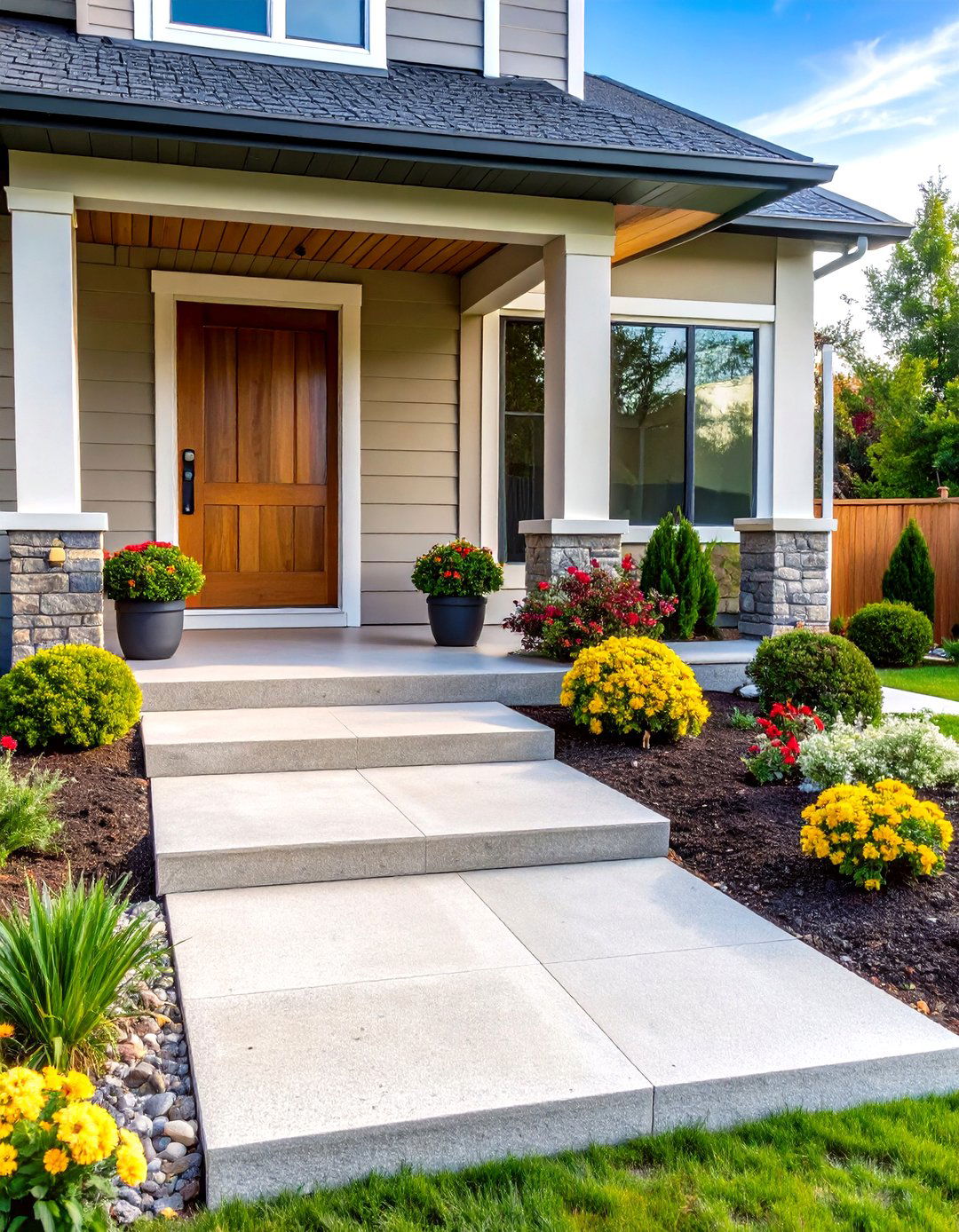
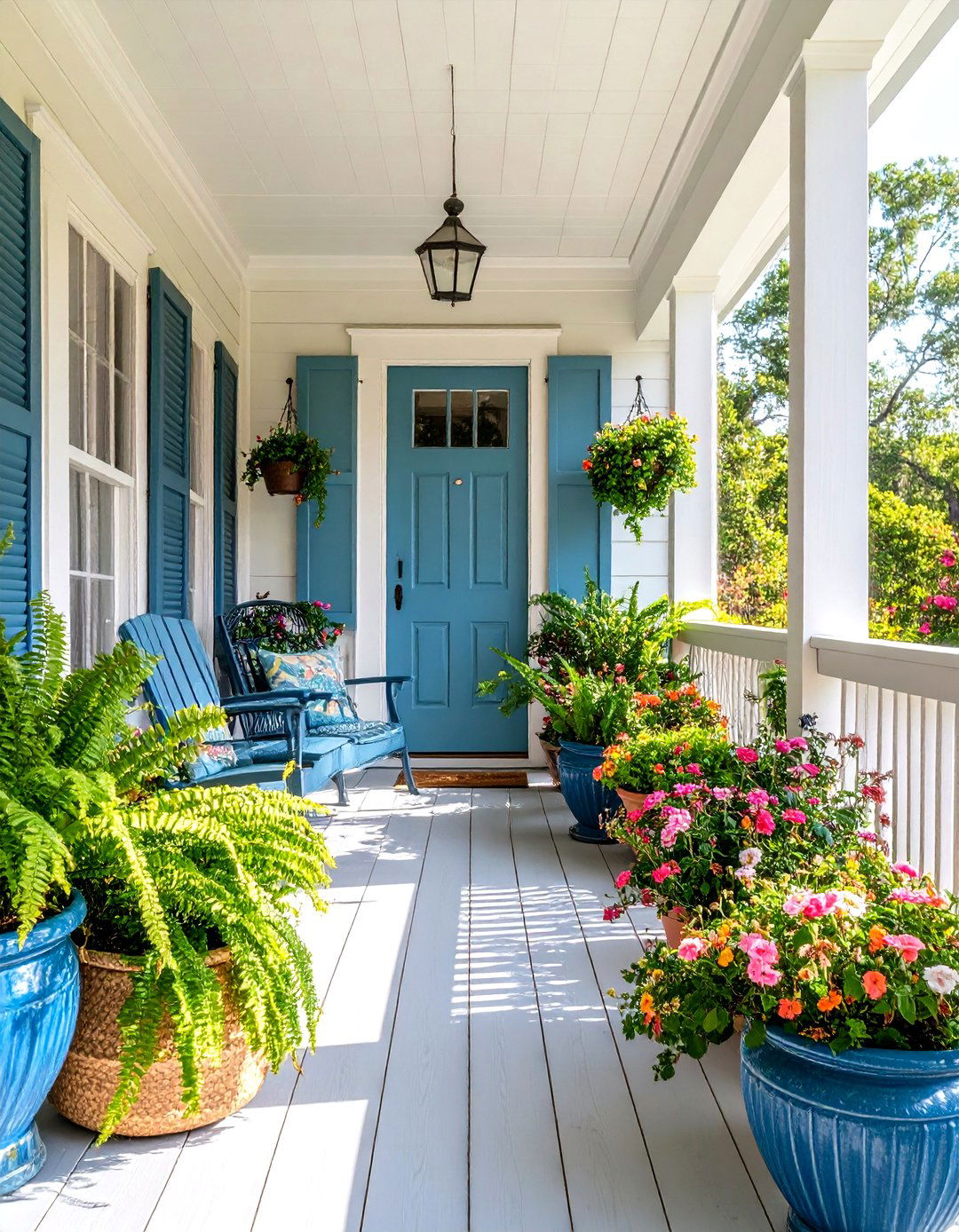



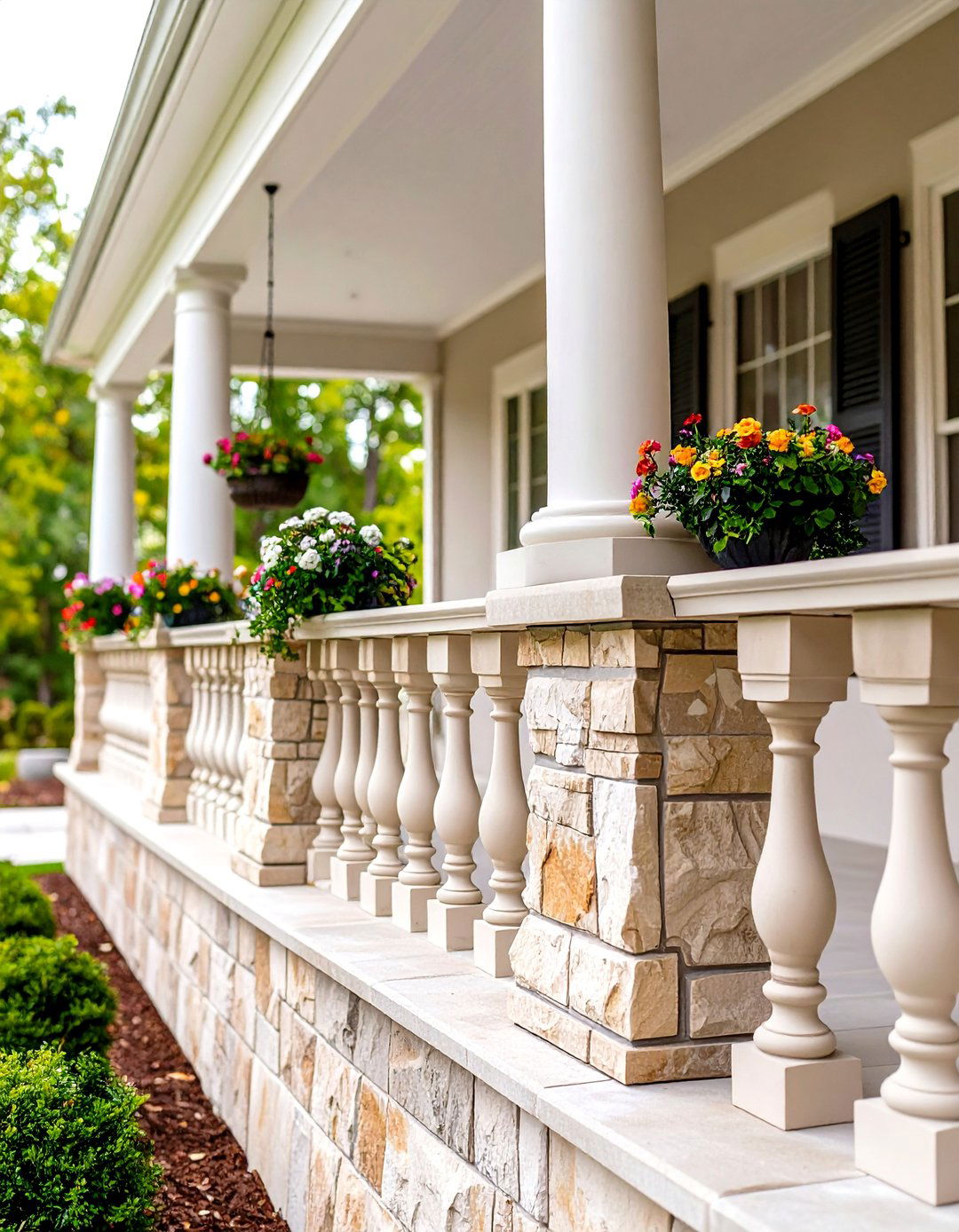
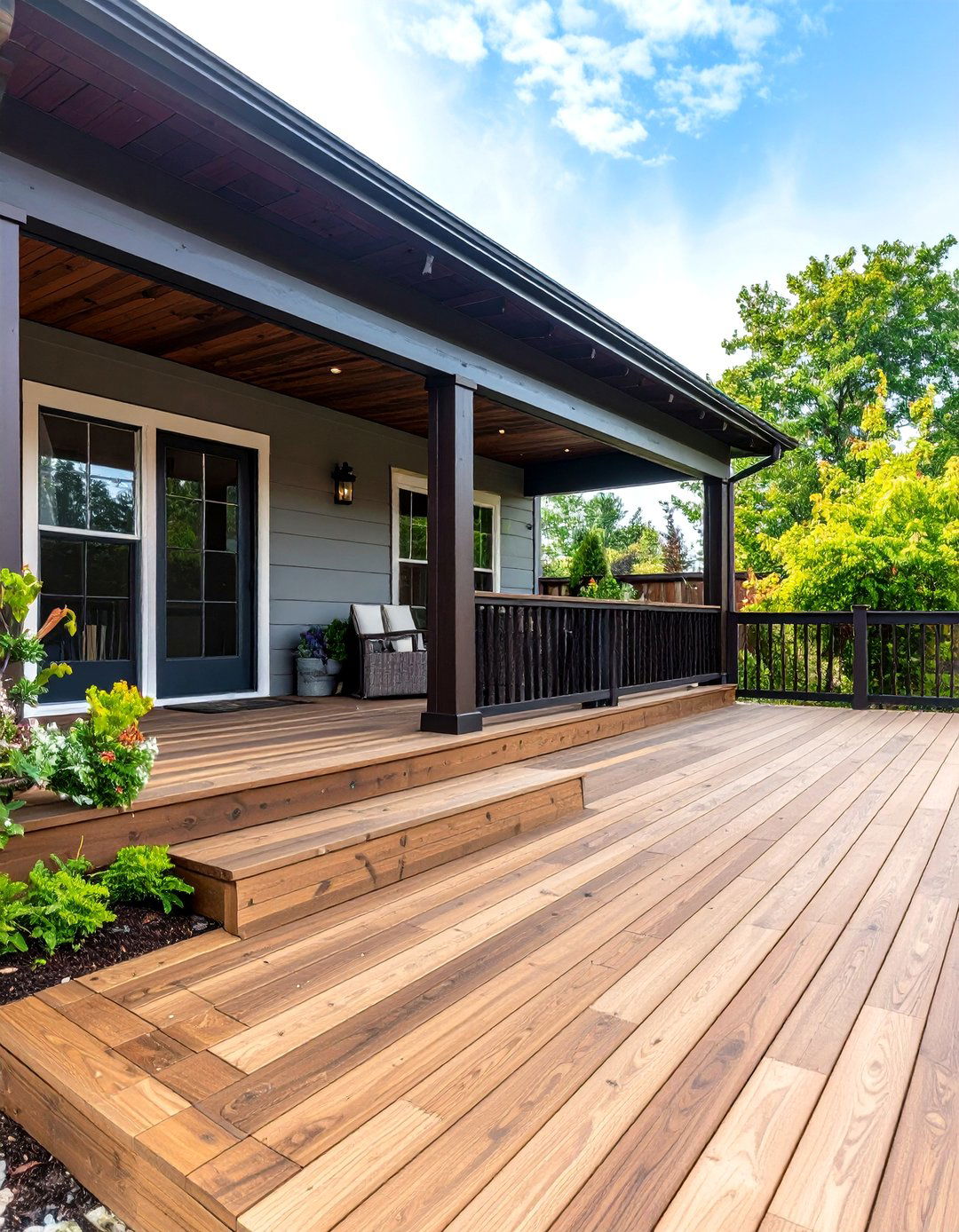
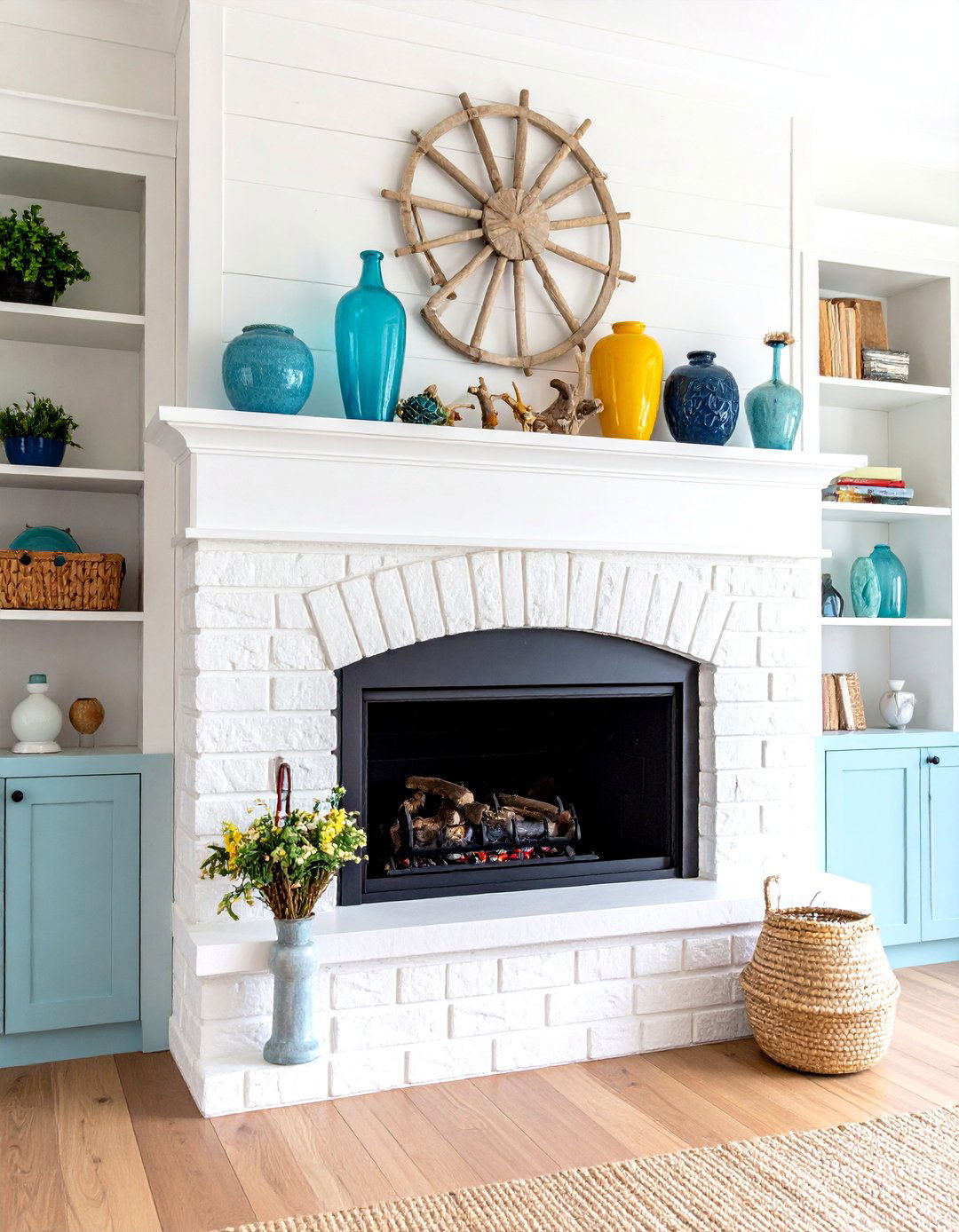

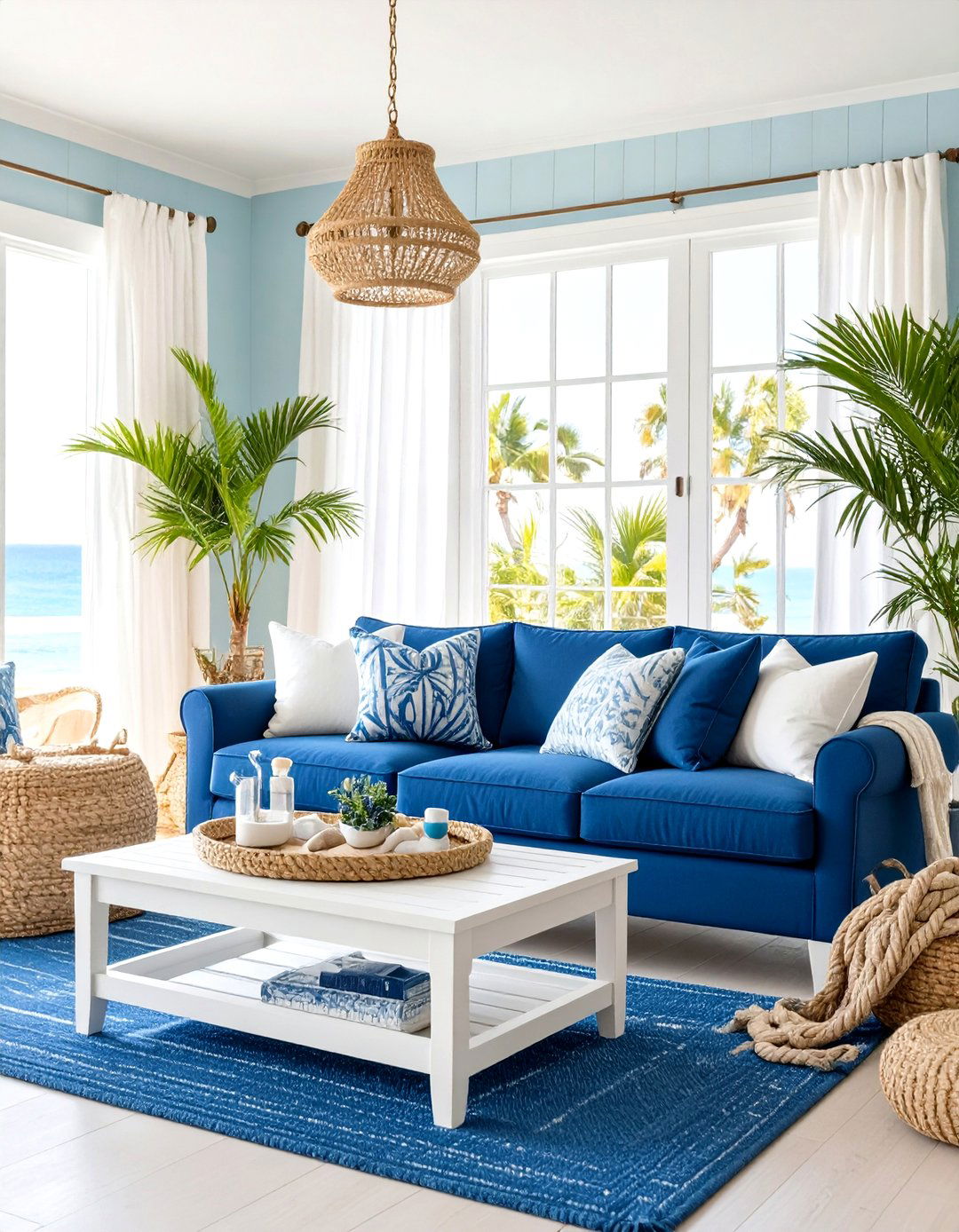
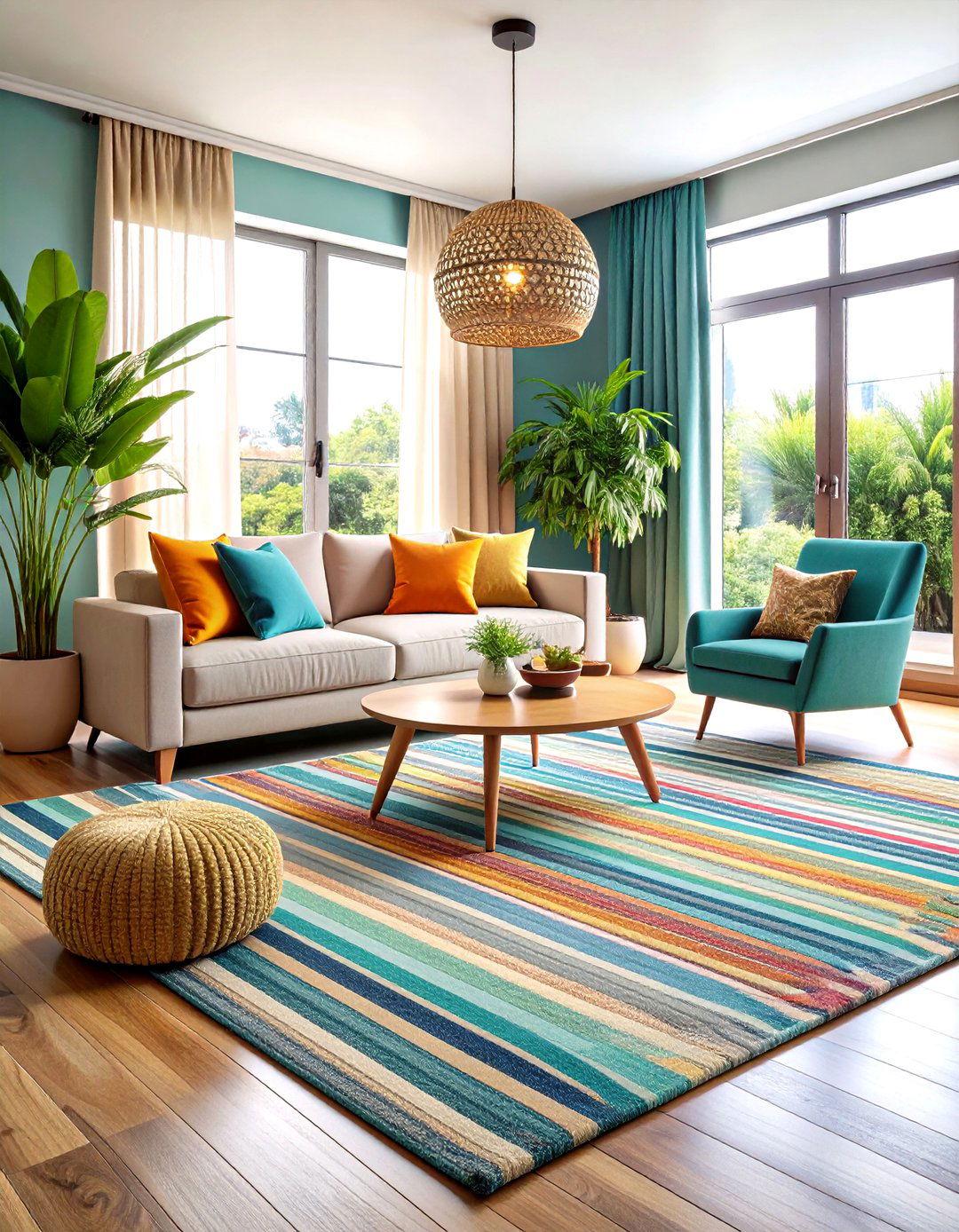


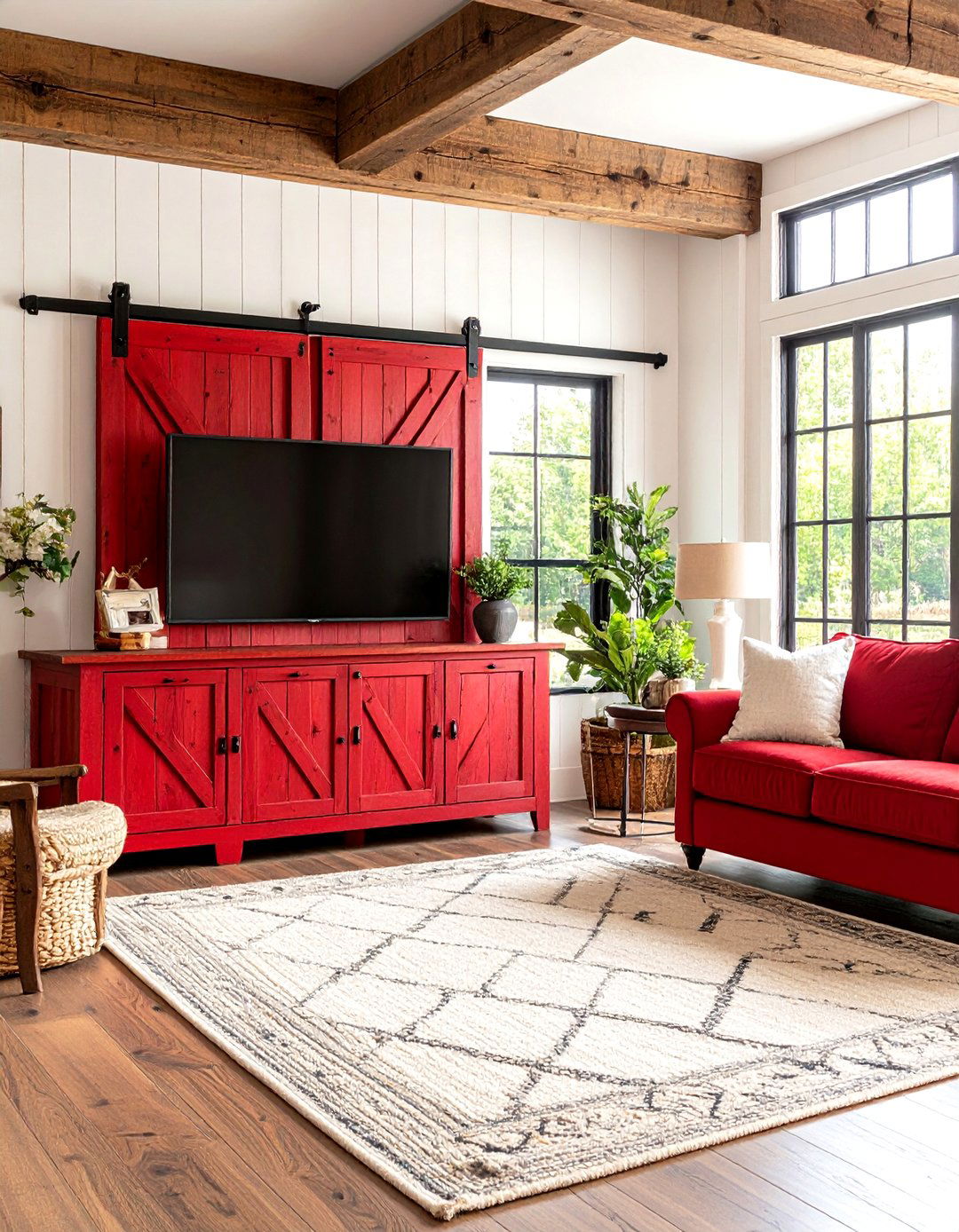
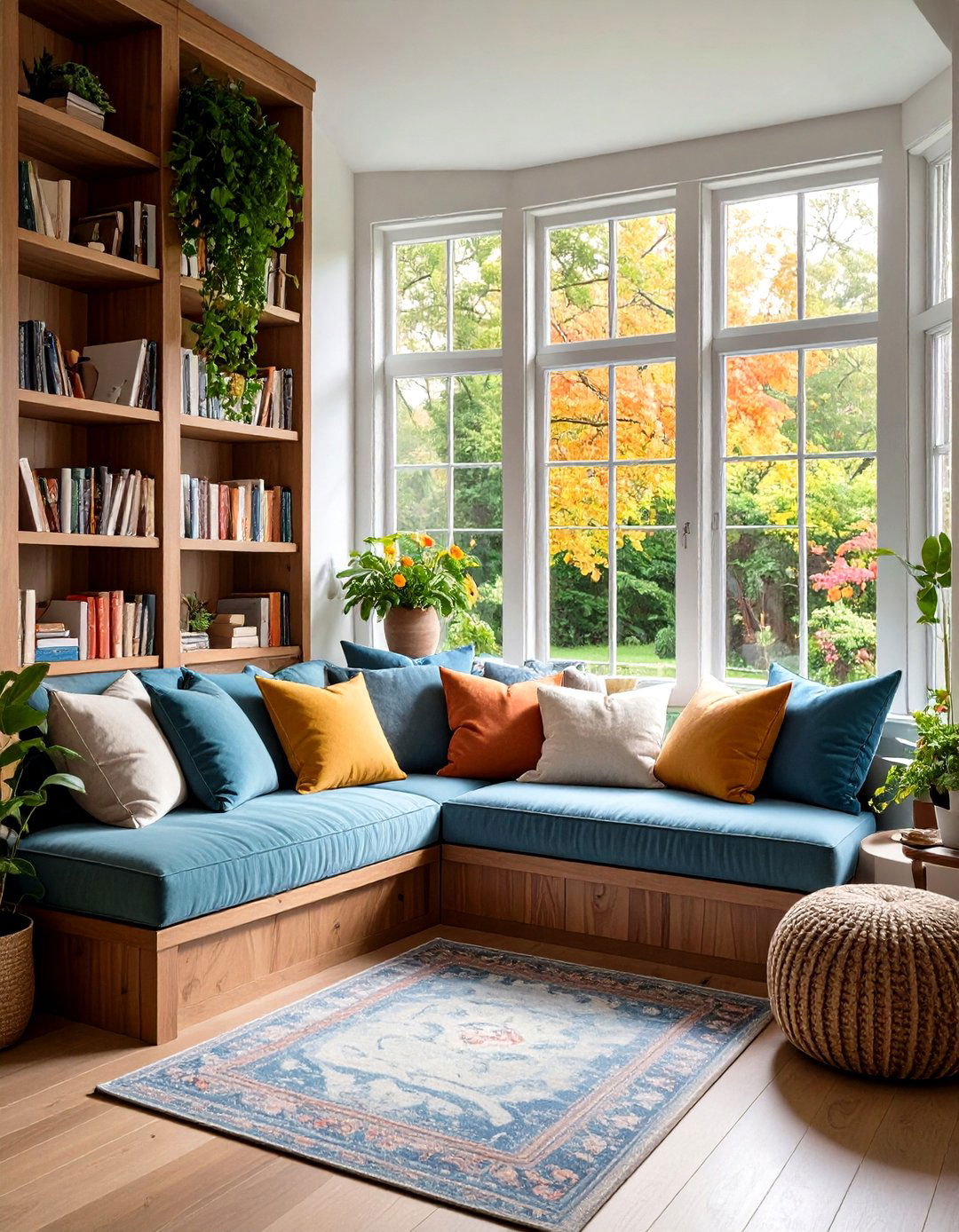


Leave a Reply